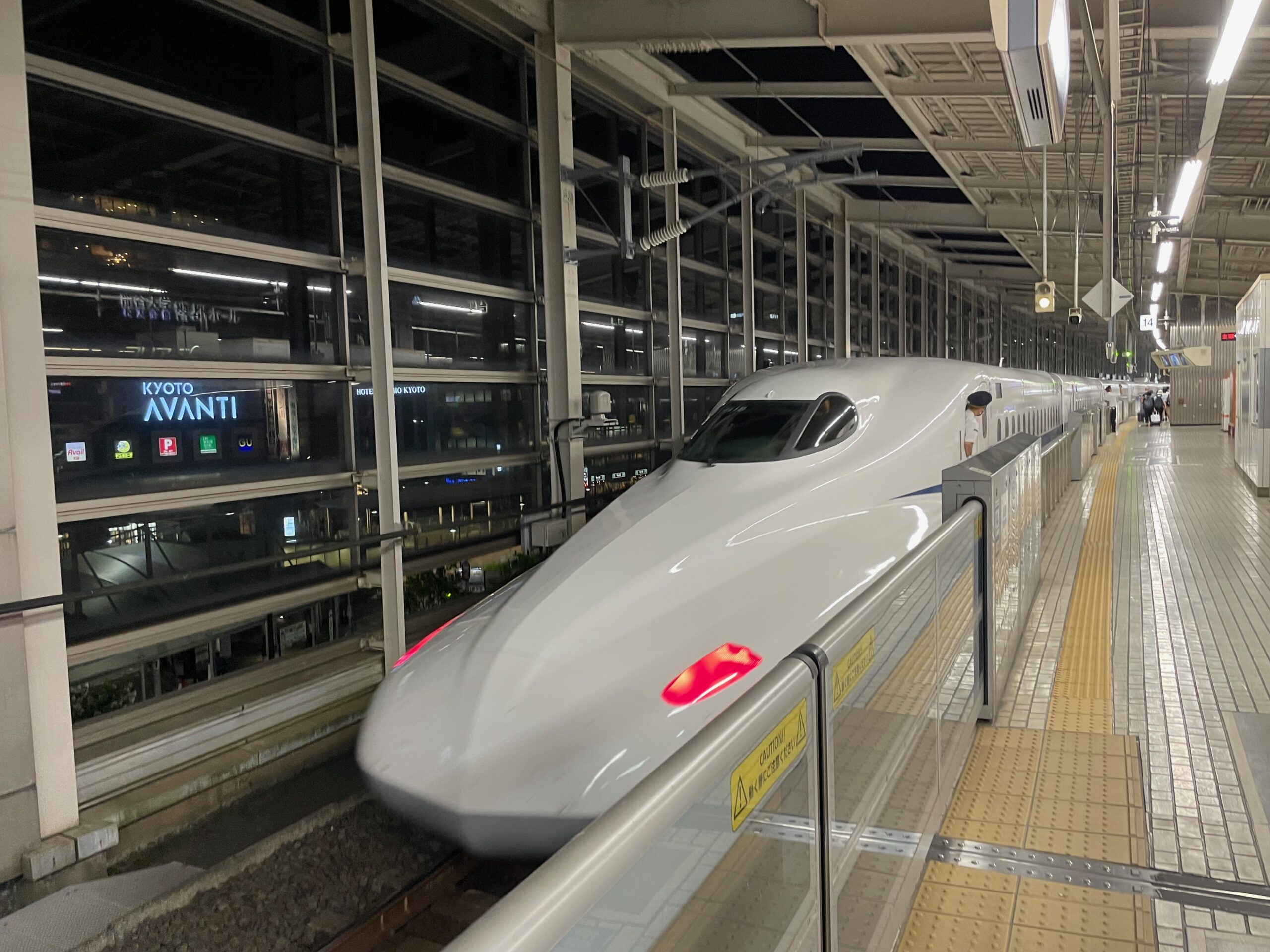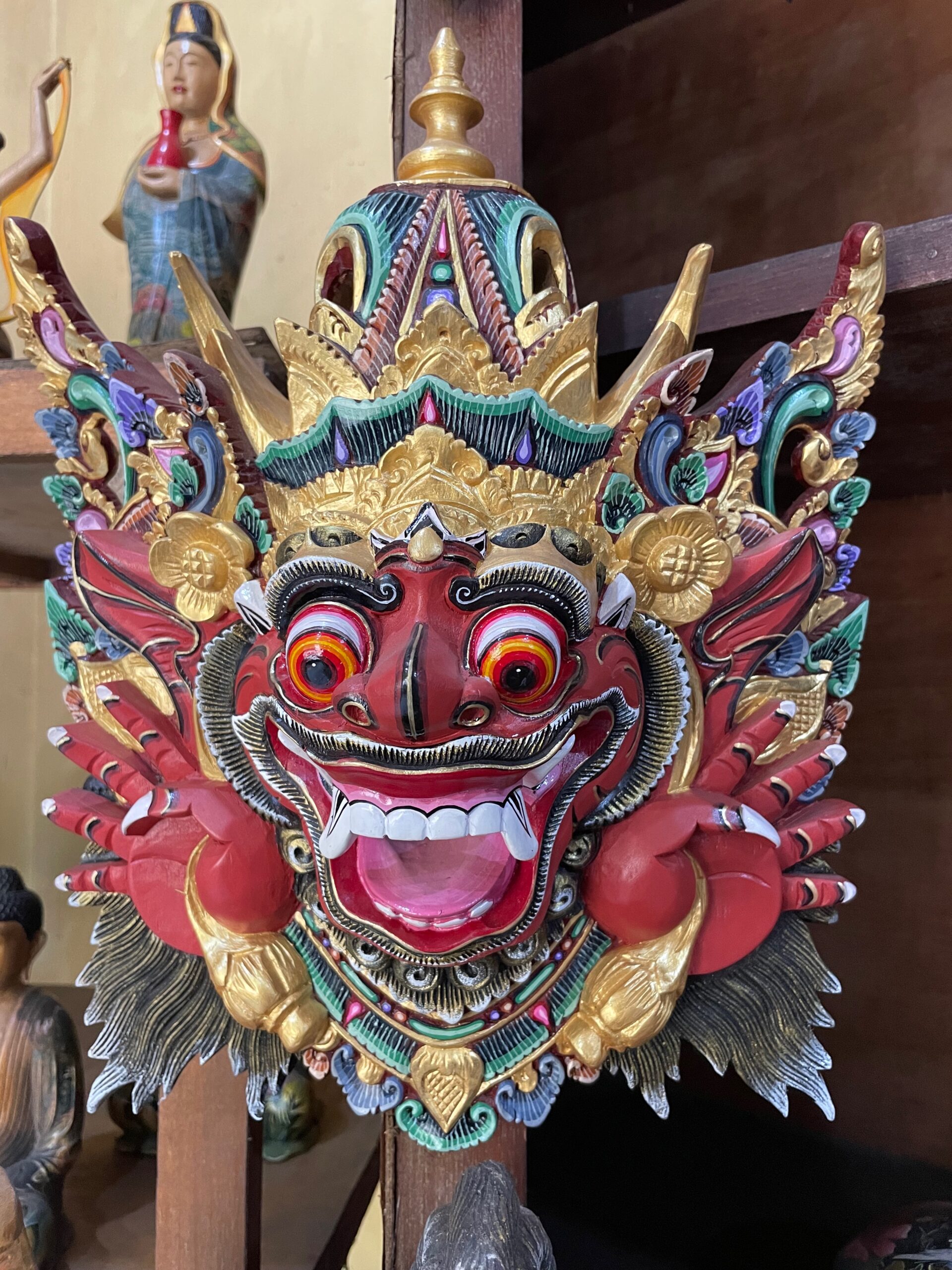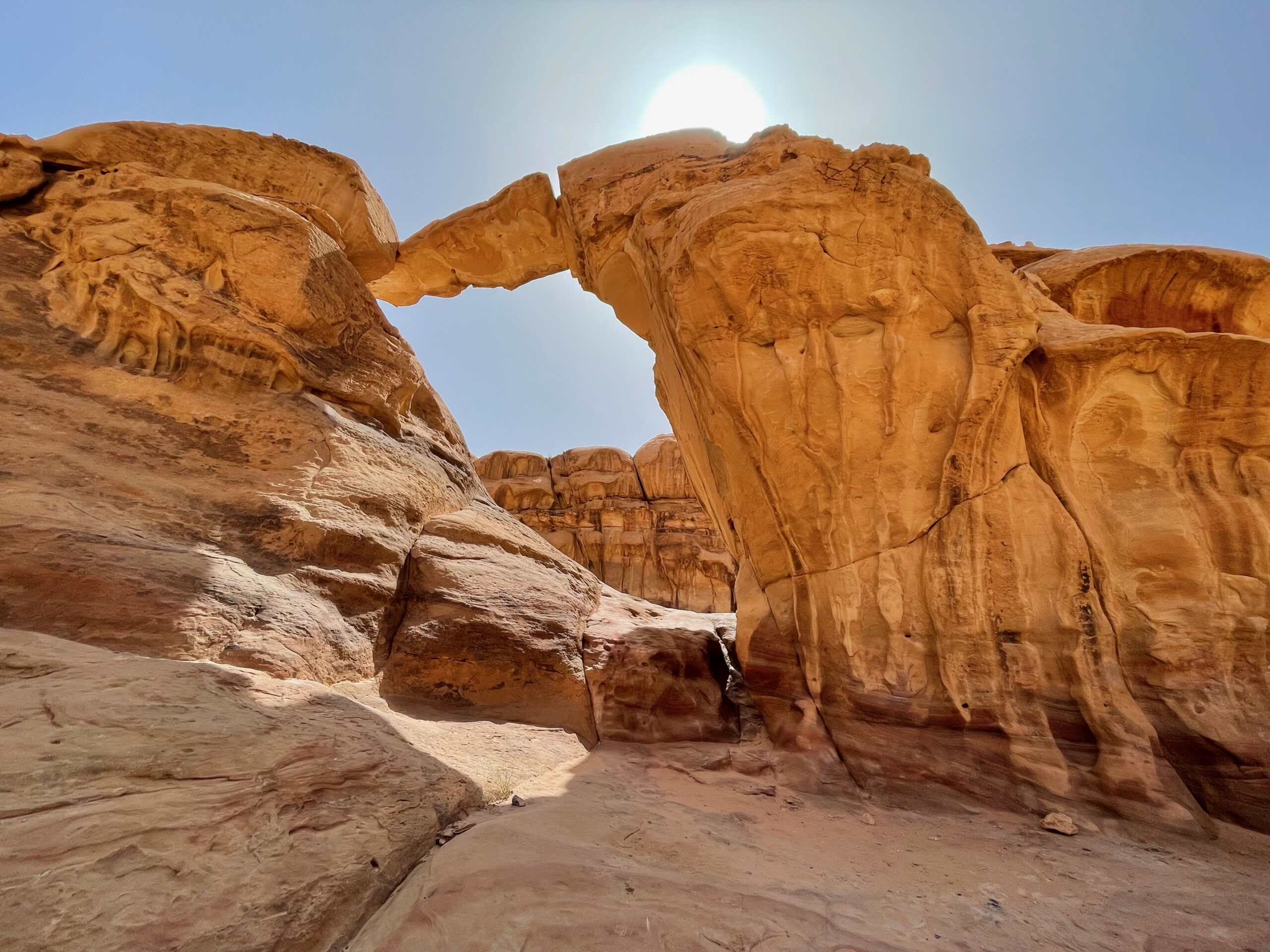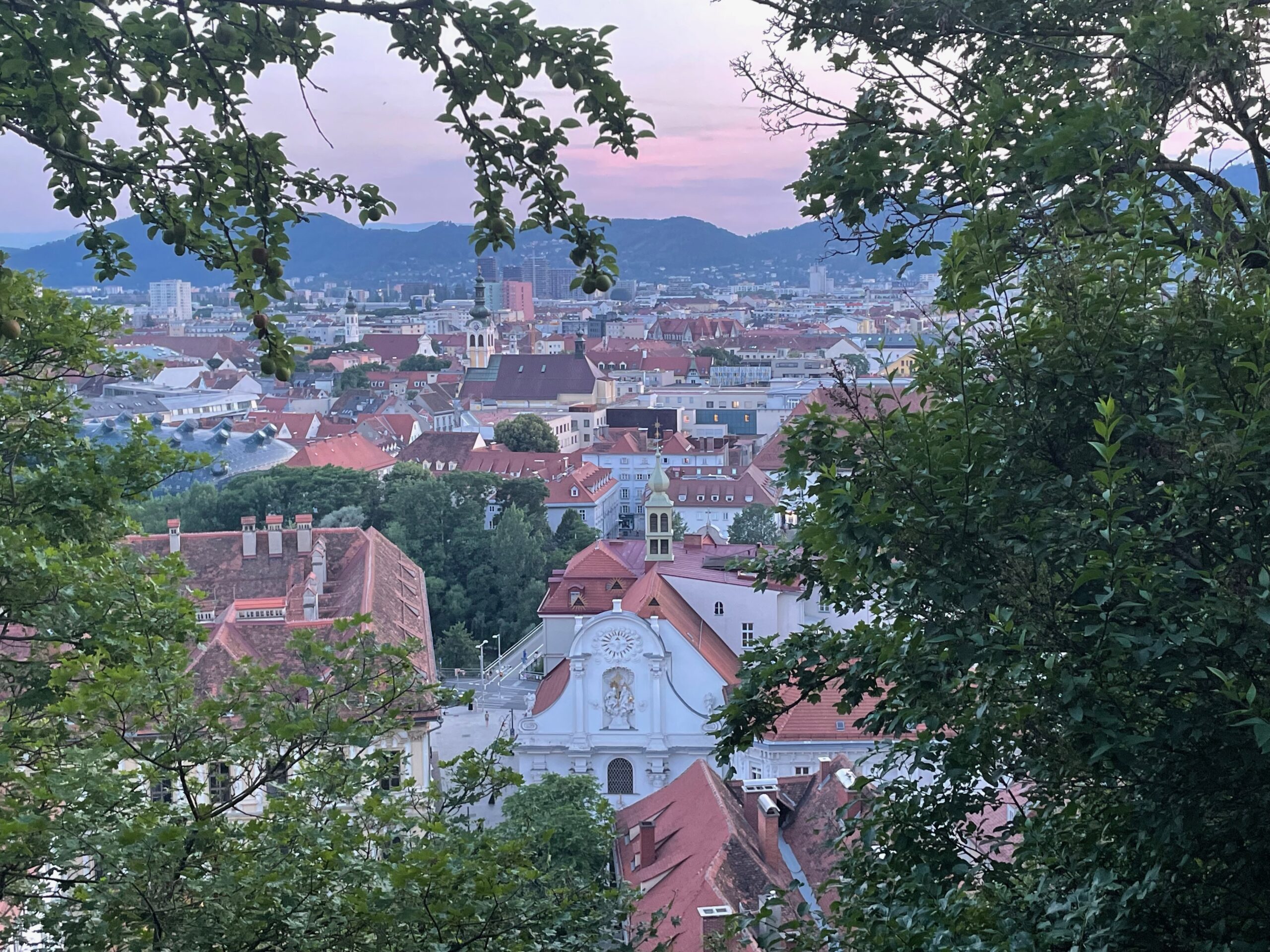In this post I want to present my 12 days itinerary around Japan with a 7 days JR pass. During my journey outside of Tokyo area I had only travelled by trains included in JR pass.
The itinerary which I created is quite intense as I like seeing many places and try different activities. In this itinerary you will find many visits to famous Japanese temples, explore the samurai houses and geisha districts as well as take in a lively atmosphere in modern cities like Tokyo and Osaka. For nature lovers, this itinerary includes 2 out of 3 Great Gardens of Japan which are exquisite gardens, which seamlessly blend nature, architecture, and culture.
This is my second visit in Japan, I have been working here for short time in year 2018 and during my stay visited several places during weekends and national holidays. Since then I have been fascinated by Japanese culture, traditions and natures and I knew I will be coming back. During this trip I revisited some of the places I have been to before and some of the towns I have travelled to for the first time.
The key to my choices where to go to places with well-preserved cultural sites like traditional castles, samurai houses or old teahouses, towns with interesting cuisine scene as well as places with modern Japanese architecture. I was looking for cities with beautiful Japanese gardens, surrounded by forests and Japanese mountains.
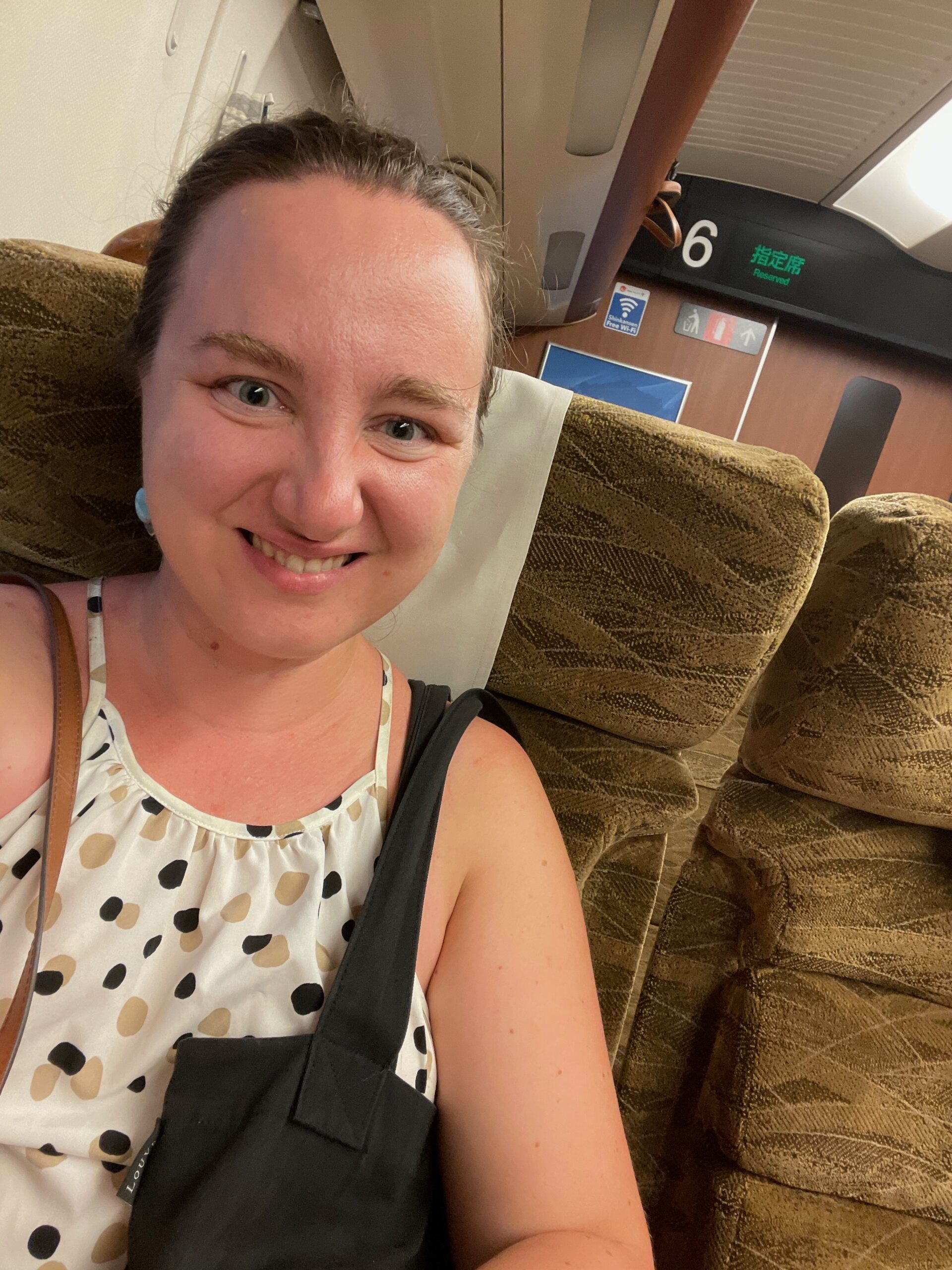 |
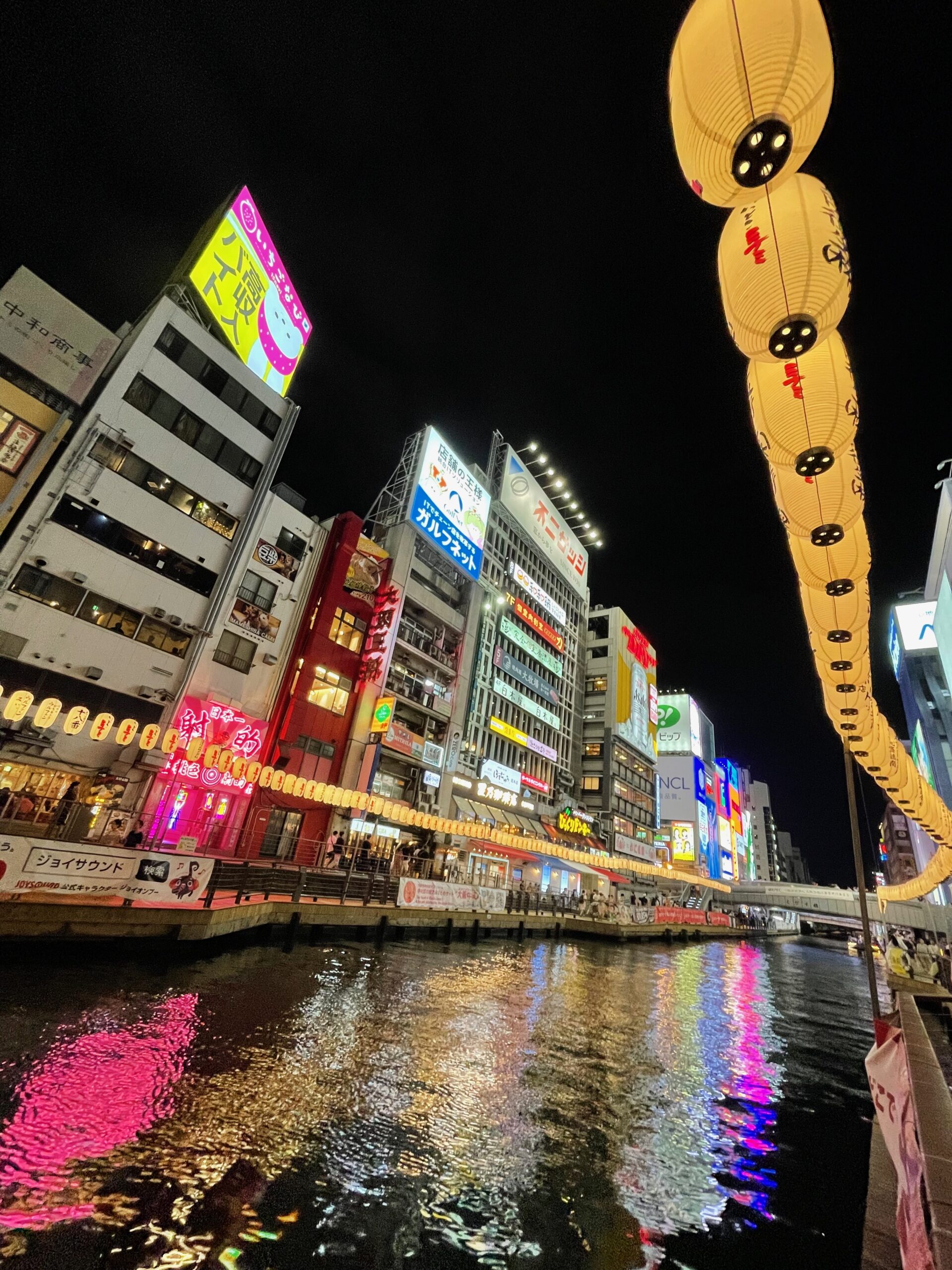 |
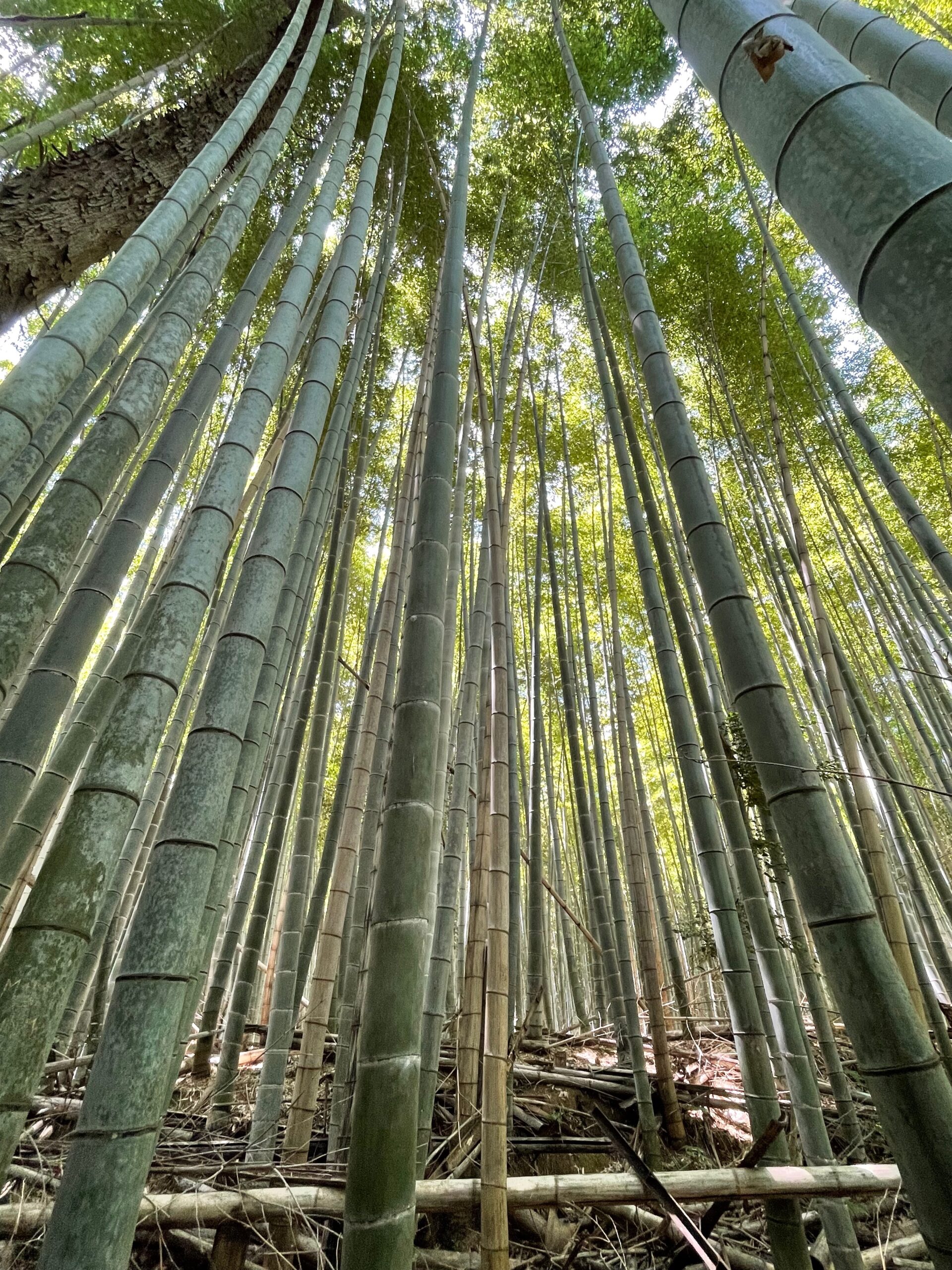 |
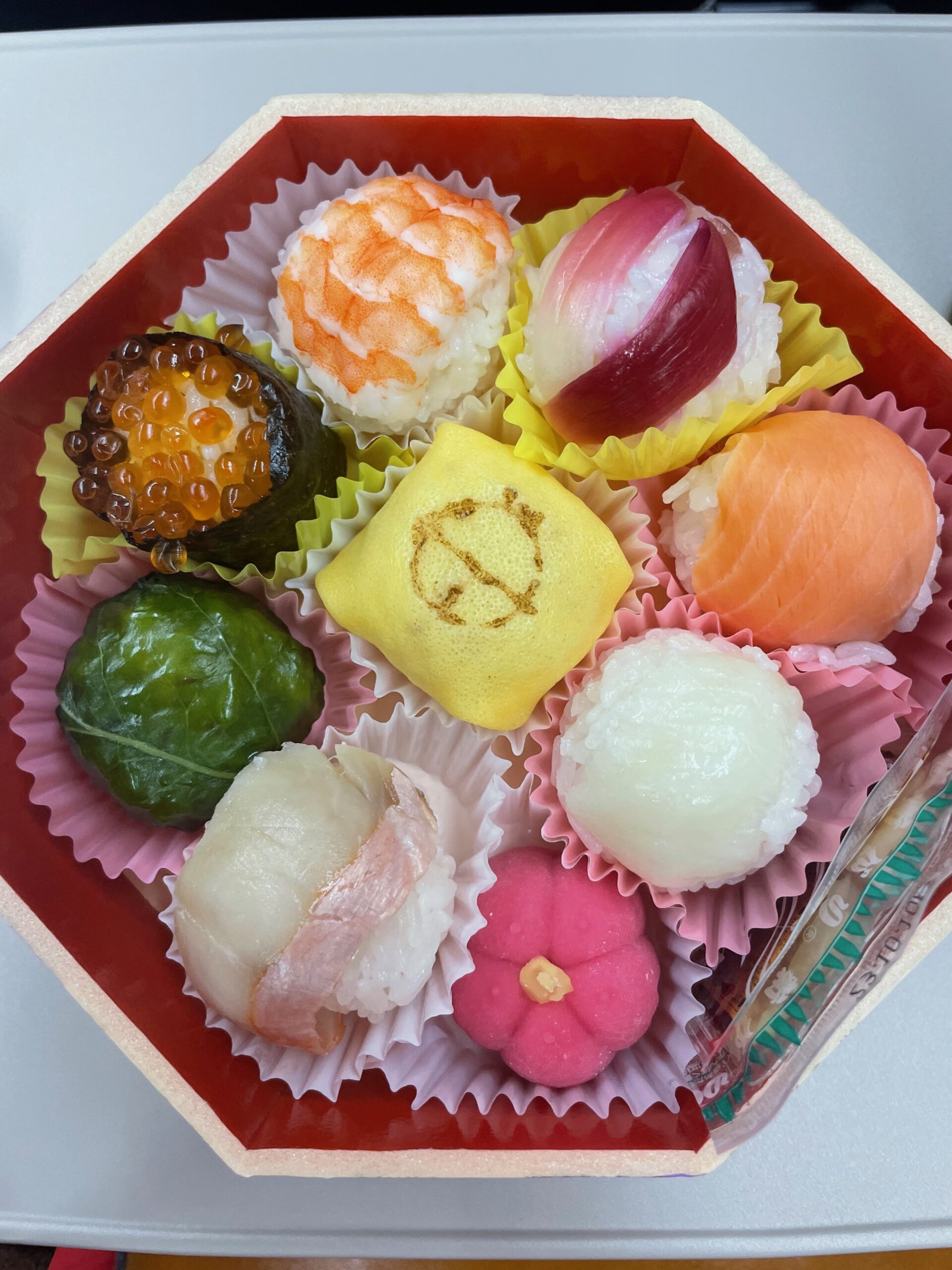 |
Travelling around Japan is efficient and convenient using dense railway network. Japanese trains are clean, safe and extremely punctual, you can easily choose an itinerary with a 2-minute change and make it since the trains come on time. The bullet fast trains called Shinkansens allow to cover larger distances very effectively and are a great way to save precious time in Japan so you can travel faster and enjoy visited places longer.
If you decide to travel around Japan by train, it is worth considering the JR Pass also known as the Japan Rail Pass. This is a special travel pass that allows foreign tourists to travel throughout Japan using the extensive network of Japan Railways (JR) Group trains, including the famous Shinkansen (bullet trains). It’s an economical and convenient way for tourists to explore Japan.
Important: Note that Japan increased the prices for JR passes, the new prices start from October 2023. The increase is very significant but in many cases the pass is still more profitable than buying single tickets. However, if you don’t plan to visit many places or want to focus on exploration of one or two regions only, then is best to do you math before to check if JR pass is a more economical option for you.
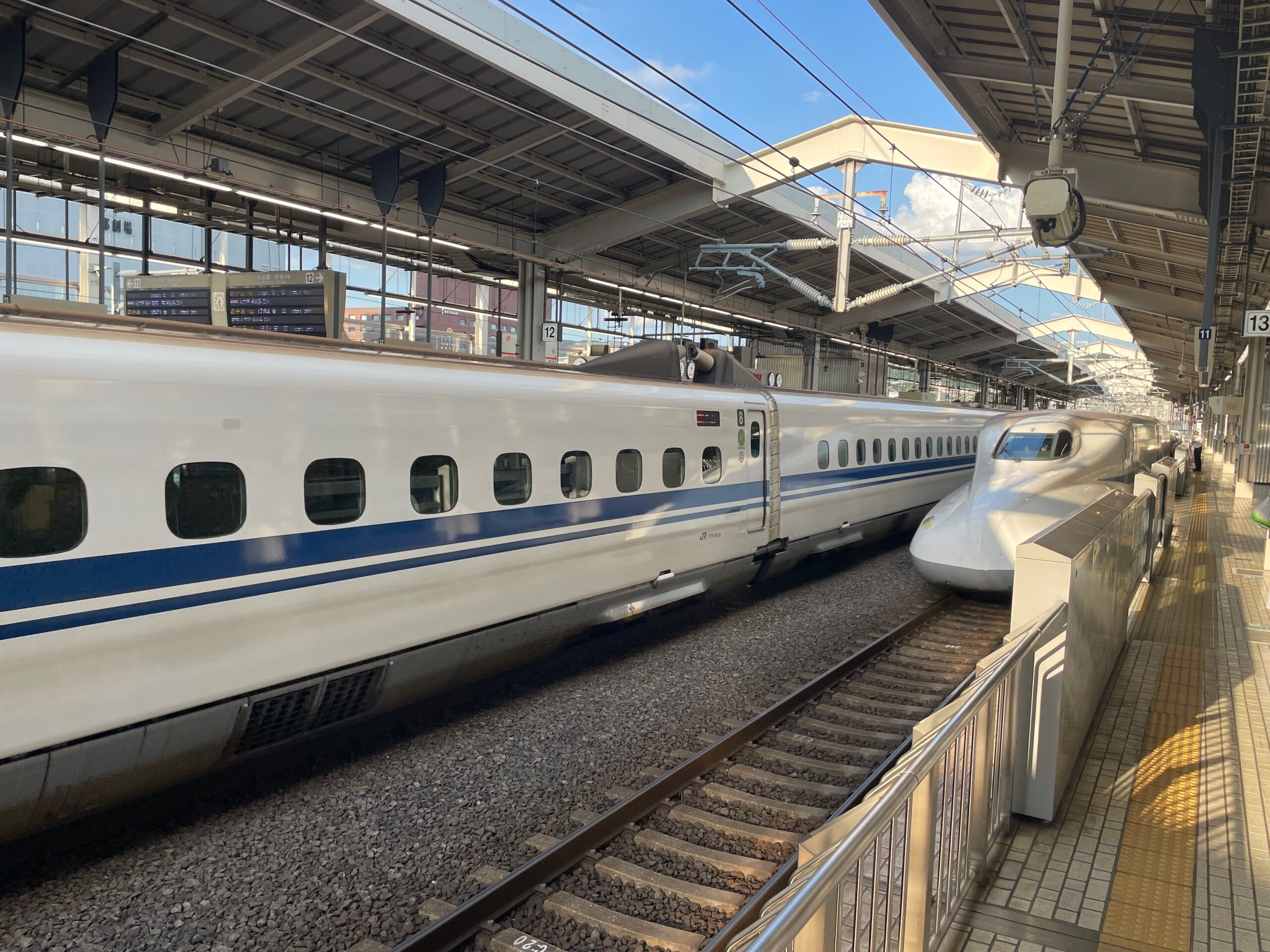 |
Here are some key points to know about the Japanese JR Pass:
- Eligibility: The JR Pass is exclusively available to foreign tourists visiting Japan for short stays. Japanese residents and long-term visitors are not eligible for this pass. Duration: The JR Pass is available in several durations, typically 7, 14, or 21 days. Travellers can choose the pass that best suits the length of their stay.
- Coverage: The pass covers most JR trains, including the Shinkansen (bullet trains), limited express, and local trains. The JR pass does not include the Nozomi and Mizuho Shinkansen services (the fastest ones), as well as certain overnight trains. The pass also extends to certain JR buses and ferries. However, it does not cover non-JR trains or private railway lines.
- Cost: The price of the JR Pass varies depending on the duration and class (ordinary or green class) chosen.
- Reservations: While the JR Pass allows for free access to many trains, reservations are recommended for the Shinkansen and popular routes, especially during peak travel seasons, to ensure you have a seat. The pass allows you to make reservations at no additional cost.
- Flexibility: The JR Pass offers flexibility, allowing you to change your travel plans and even extend your stay in Japan if your pass is still valid.
- Exchange and activation: To obtain a JR Pass, you need to purchase an exchange order before arriving in Japan, typically from a licensed travel agency outside of Japan. Once in Japan, you must exchange your order for the actual pass at a JR Pass exchange office.
- Regional passes: In addition to the nationwide JR Pass, there are various regional passes available that offer unlimited travel in specific areas or for specific periods. These can be excellent options for travellers planning to explore specific regions of Japan.
- Validity and extension: The pass is valid from the date of activation and for the consecutive number of days indicated on the pass. It cannot be paused, and the validity period starts upon your first use. Extensions or refunds are generally not allowed.
The Japan Rail Pass is an excellent option for travellers who intend to explore multiple cities and regions within Japan. It not only offers a cost-effective means of transportation but also provides the convenience of unlimited travel on the extensive JR rail network, making it a popular choice for tourists seeking to maximize their Japan experience through train travel. However, it’s essential to plan your itinerary carefully to ensure you get the most value out of the pass.
I recommend to stay in Tokyo for 4 days (with one day planned for a trip to Kamakura, Nikko, Yokohama or Hakone) and stay one day longer in the town where you finish you pass, in case of this itinerary it was Fukuoka.
You can find my 7-days itinerary with my JR pass below:
Day(s) 0 TOKYO (recommended 4 days)
I recommend starting (or finishing) your itinerary from Tokyo, the capital of Japan. To explore properly various neighbourhoods of Tokyo, visit the museums, enjoy the rich cuisine scene, see historical temples in Asakusa, wonder around anime and manga attractions in Ahikabara you will need at least 3 days. Tokyo is also a great place to be based if you want to have one day trips to spiritual and historical cities like Nikko or Kamakura, you can also consider a one day trip to Hakone where you can enjoy famous hot springs and admire beautiful views at Mount Fuji. If you stay just in Tokyo, you can purchase 24 hours, 48 hours or 72 hours passes for unlimited metro rides (including all the lines except of JR), this offer is valid for visitors who have a tourist visa and costs several dollars/euros and is much more economical option than JR pass which covers all the country.
If you decide for daily trips outside of Tokyo with regional trains, you may want to may your calculations to see if longer JR pass is more profitable.
I recommend staying in Tokyo to enjoy a diverse offer of experiences, due to the competition you can have good prices and convenient availabilities. Regardless if you want to take part in the traditional tea ceremony, see kabuki performance, or watch a sumo wrestling or just catch up with your Japanese items shopping – Tokyo has it all and in abundance.
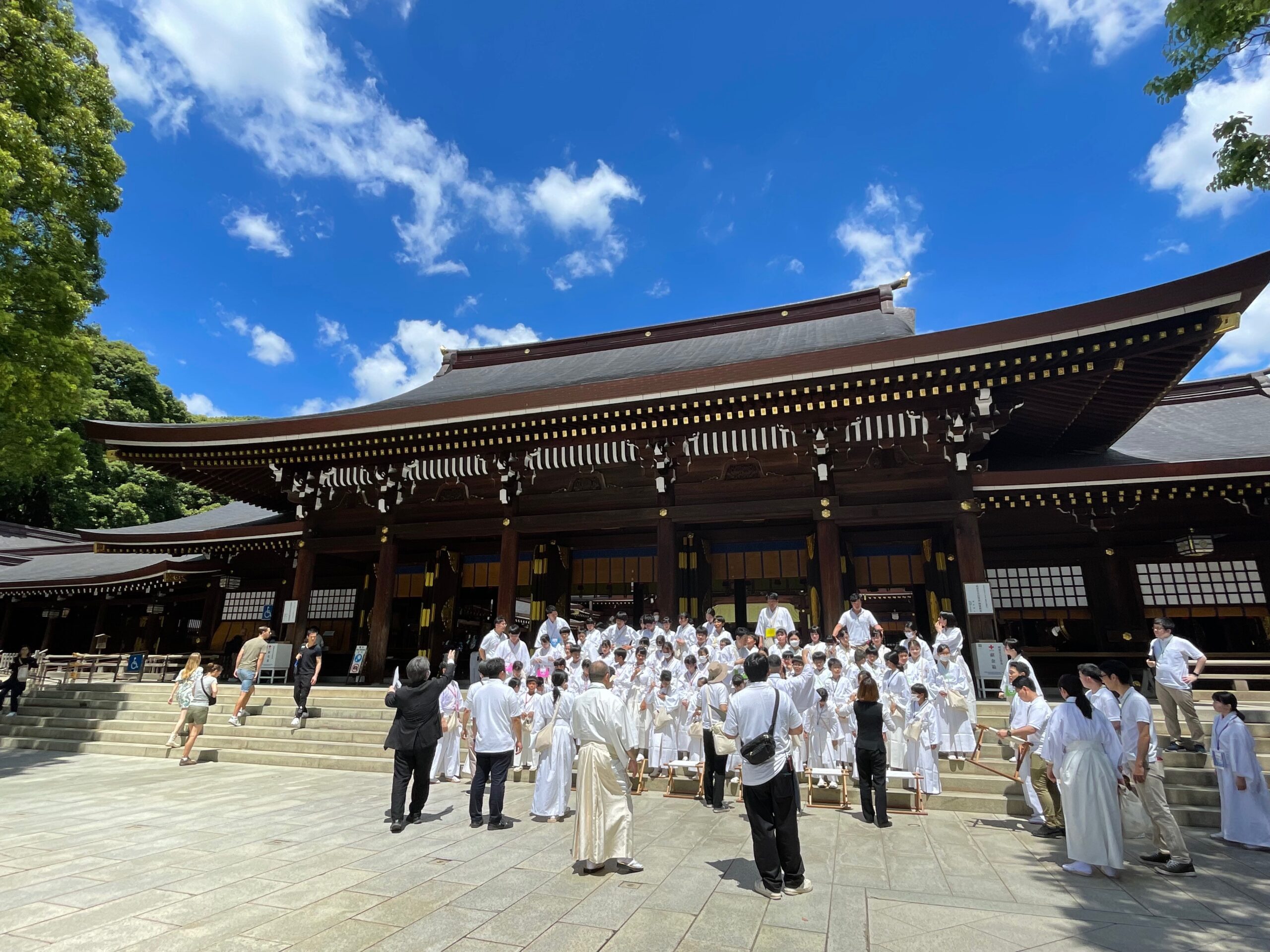 |
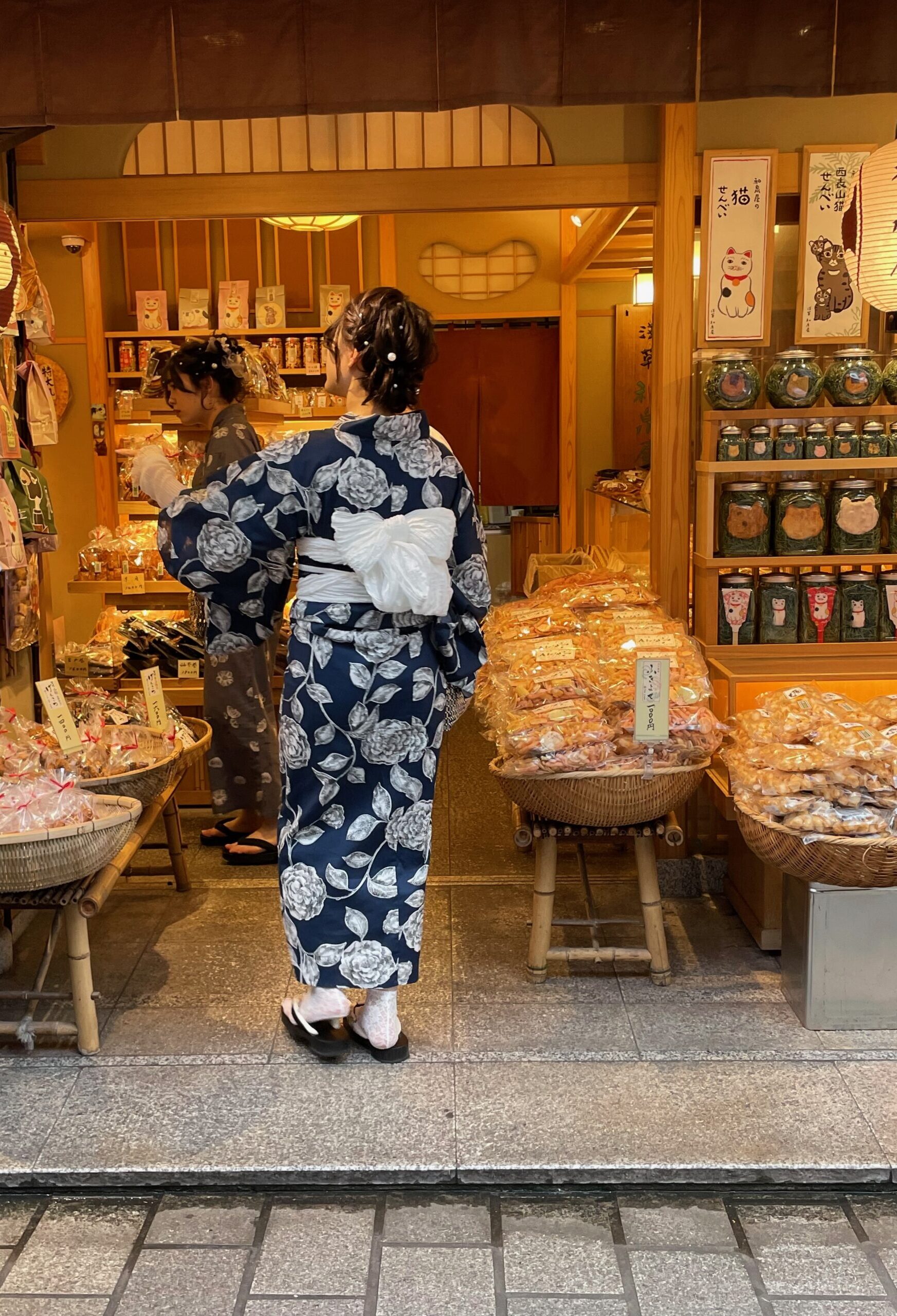 |
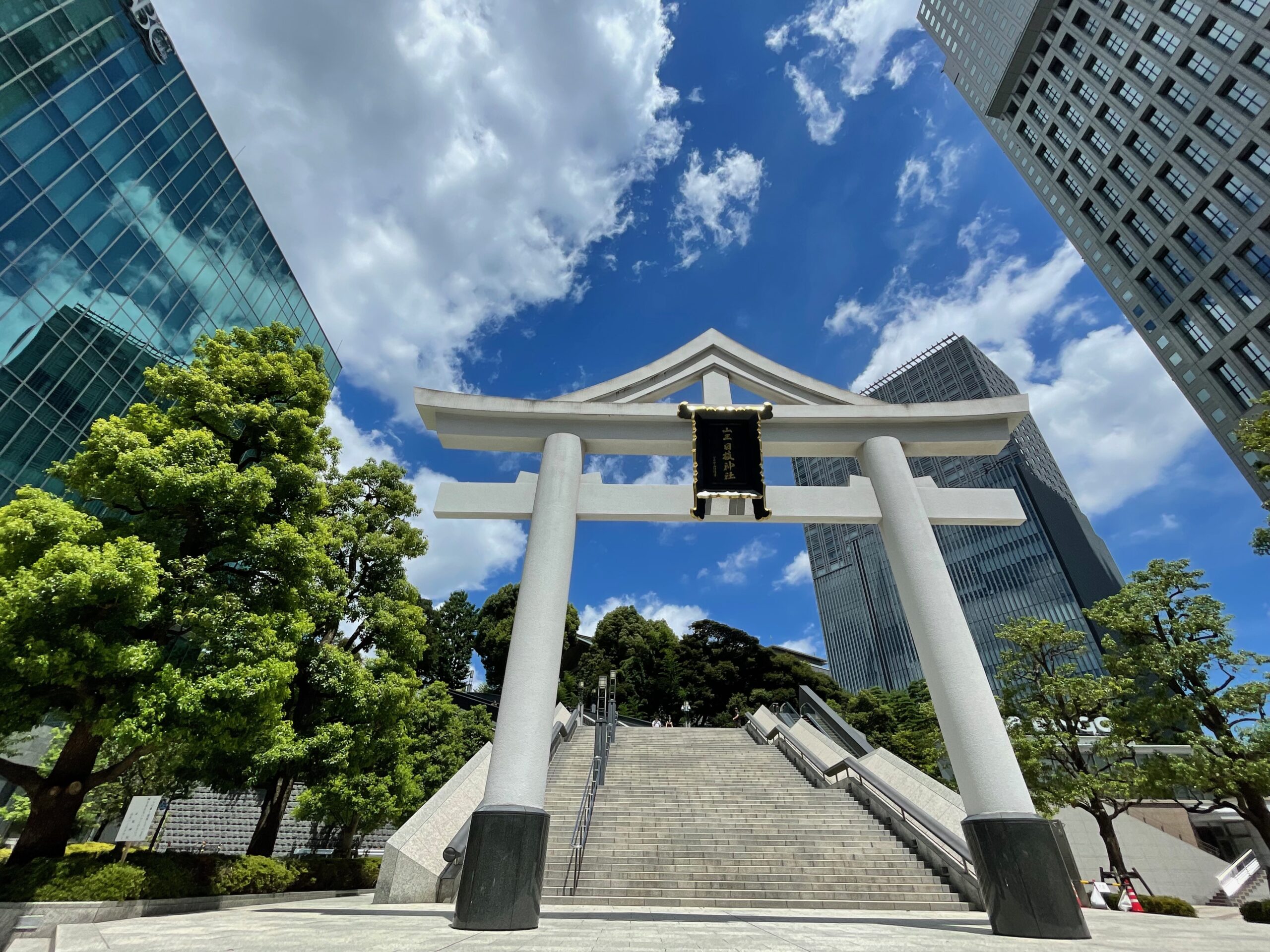 |
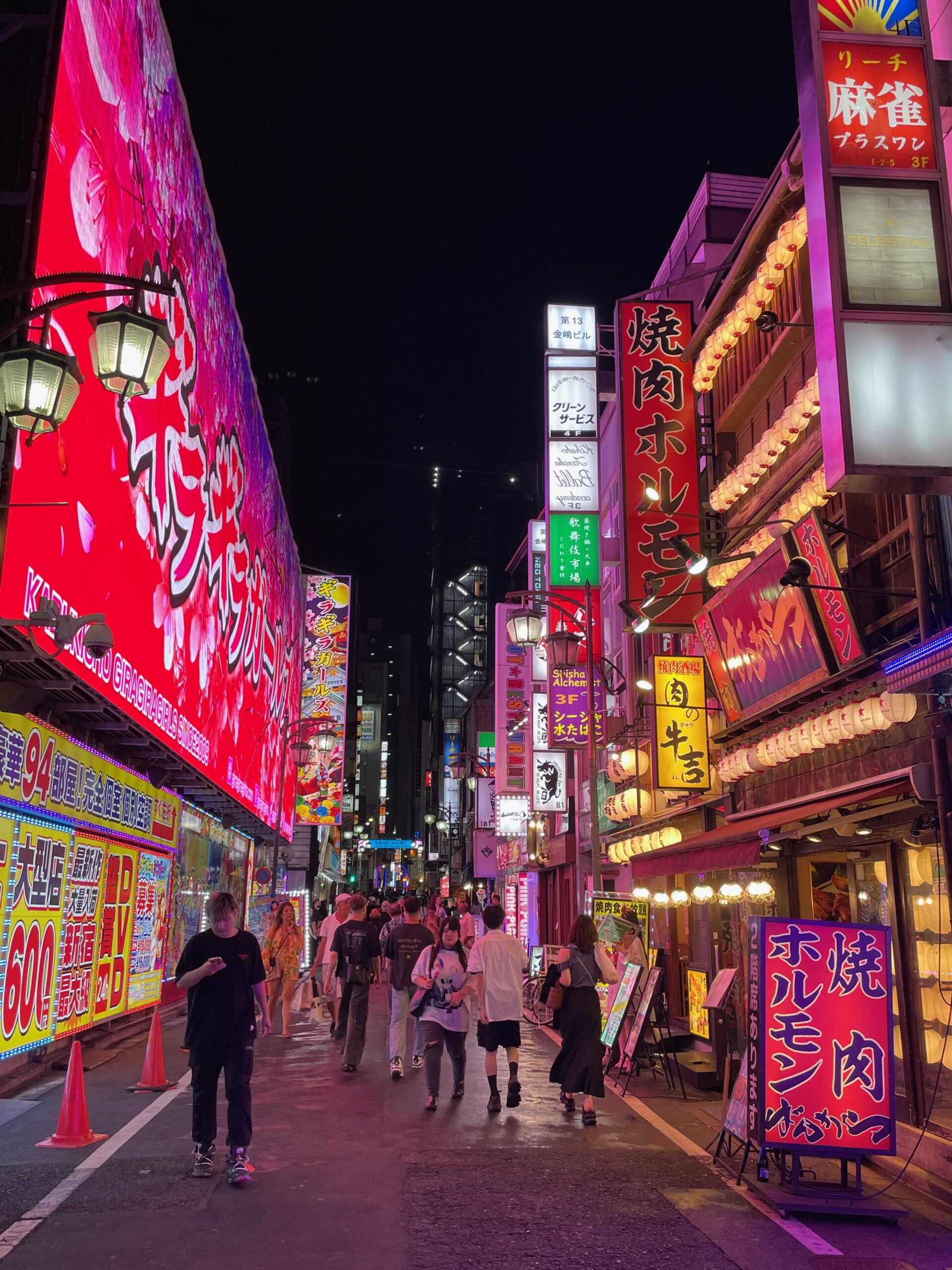 |
If you stay in Tokyo during cherry blossom season, check out this post for best sakura spots in the city:
Cherry blossom in Japan. Best and most scenic sakura spots in Tokyo.
I have started my stay in Tokyo and finished in Fukuoka from where I took a ferry to Busan in South Korea.
Check out these posts to read about my stay in Korea (mostly Seoul):
Culturally-packed visit to Seoul. What to see in 3 days to learn more about South Korea?
Tour to the Demilitarized Zone in South Korea – practical guide.
Here is the itinerary with activated JR pass:
Day 1– KANAZAWA:
I have activated my JR pass early in the morning to have a one-day trip to Kanazawa. Kanazawa is a charming city located on the west coast of Japan’s Honshu Island, and it’s known for its rich history, stunning architecture, and beautiful natural landscapes. It takes around 2.30 hours to get to Kanazawa from Tokyo station by Hokuriku-Shinkansen. Kanazawa is often referred to as “Little Kyoto” because it has retained much of its historical charm. You may want to visit the town if you’re interested in Japanese history of traditions. In Kanazawa you will find well-preserved geisha districts such as Higashi-Chaya and Kazuemachi; you can also explore the Nagamachi district, which was once home to samurai. Here, you can visit the Nagamachi Samurai Houses, including Nomura-ke, to get a sense of the samurai way of life in Japan. In Kanazawa you will also find Kenrokuen Garden which is classified as one of Great Garden in Japan (one of Japan’s most famous and beautiful gardens). It features exquisite landscaping, seasonal flowers, ponds, teahouses, and walking paths.
Check this post to see my visit to Kenrokuen Garden and Kōraku-en in Okayama:
Visiting 2 out of 3 Great Gardens in Japan. Are Kenroku-en in Kanazawa and Kōraku-en in Okayama one of the most beautiful parks in the country?
Kanazawa is also a great destination for foodies as it is renowned for its cuisine, particularly seafood from the Sea of Japan. Don’t miss the local specialties, such as Kaga Ryori, which includes kaiseki cuisine featuring seasonal ingredients. Also, try the fresh sushi and seafood at the Omicho Market.
At the end of the day I have come back to Tokyo with the latest Shinkansen. Since I was staying in Tokyo in the previous day and it was convenient for this itinerary to departure next day from Tokyo, I decided to stay in the capital for one day longer to avoid luggage and change of hotels hassle. However, if you want to stay in Kanazawa region as a part of your itinerary, the city has many nice hotels in every budget and is a good base to explore nearby towns, villages and natural sites.
Kanazawa is a good base if you want to see a beautiful historical city of Takayama, visit a picturesque village of Shiragawa or relax in one of the onsens in Nagano.
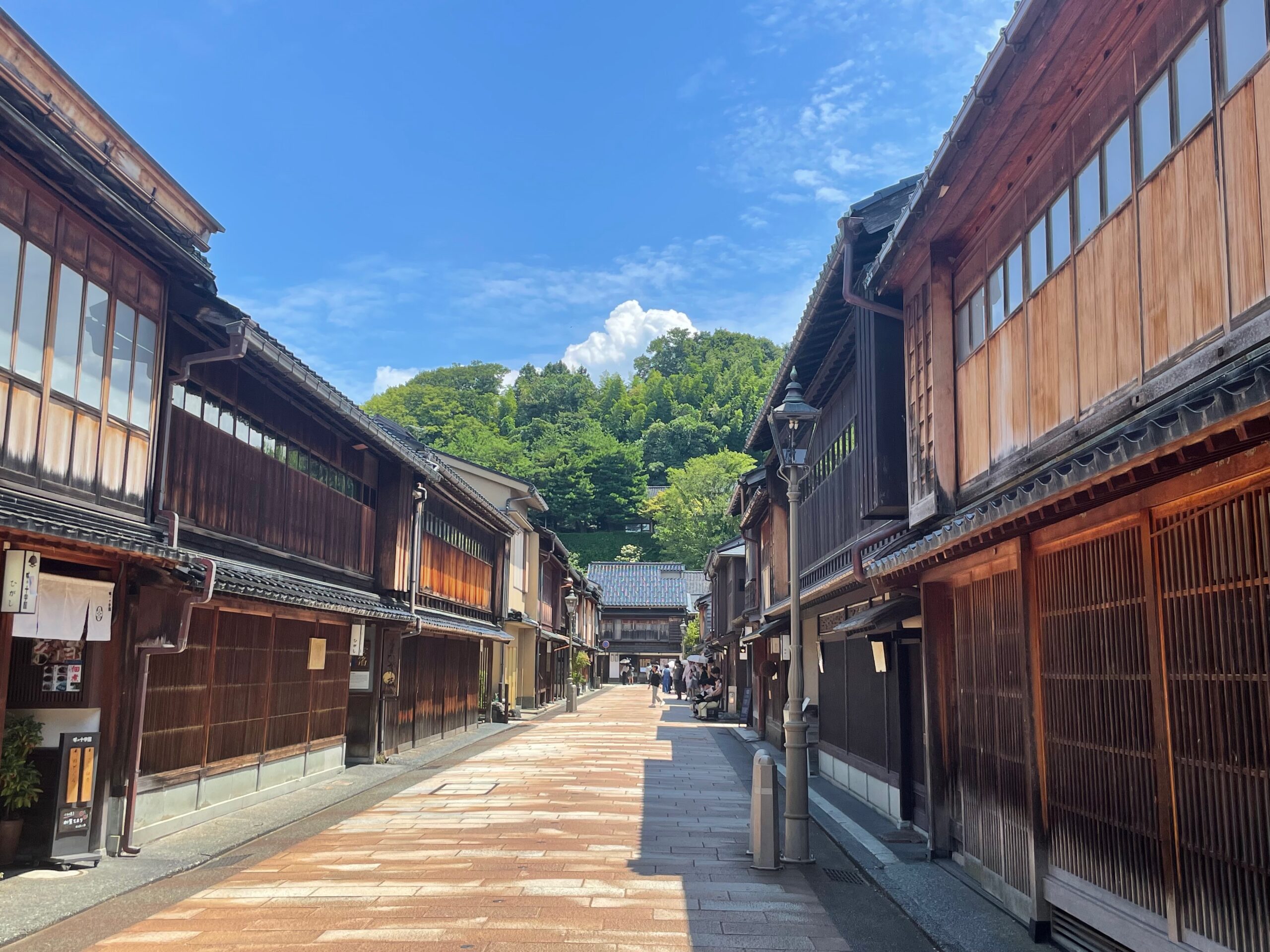 |
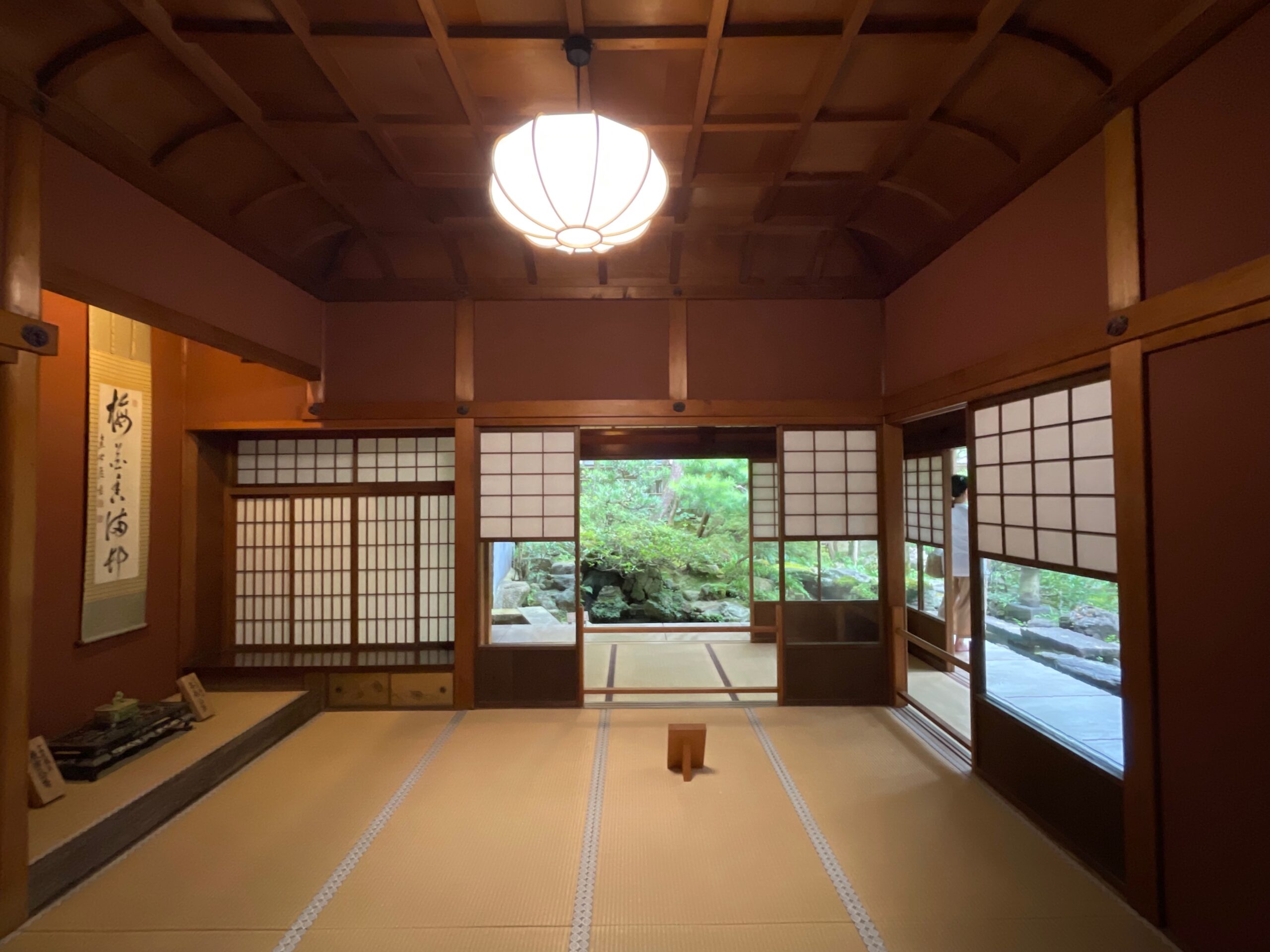 |
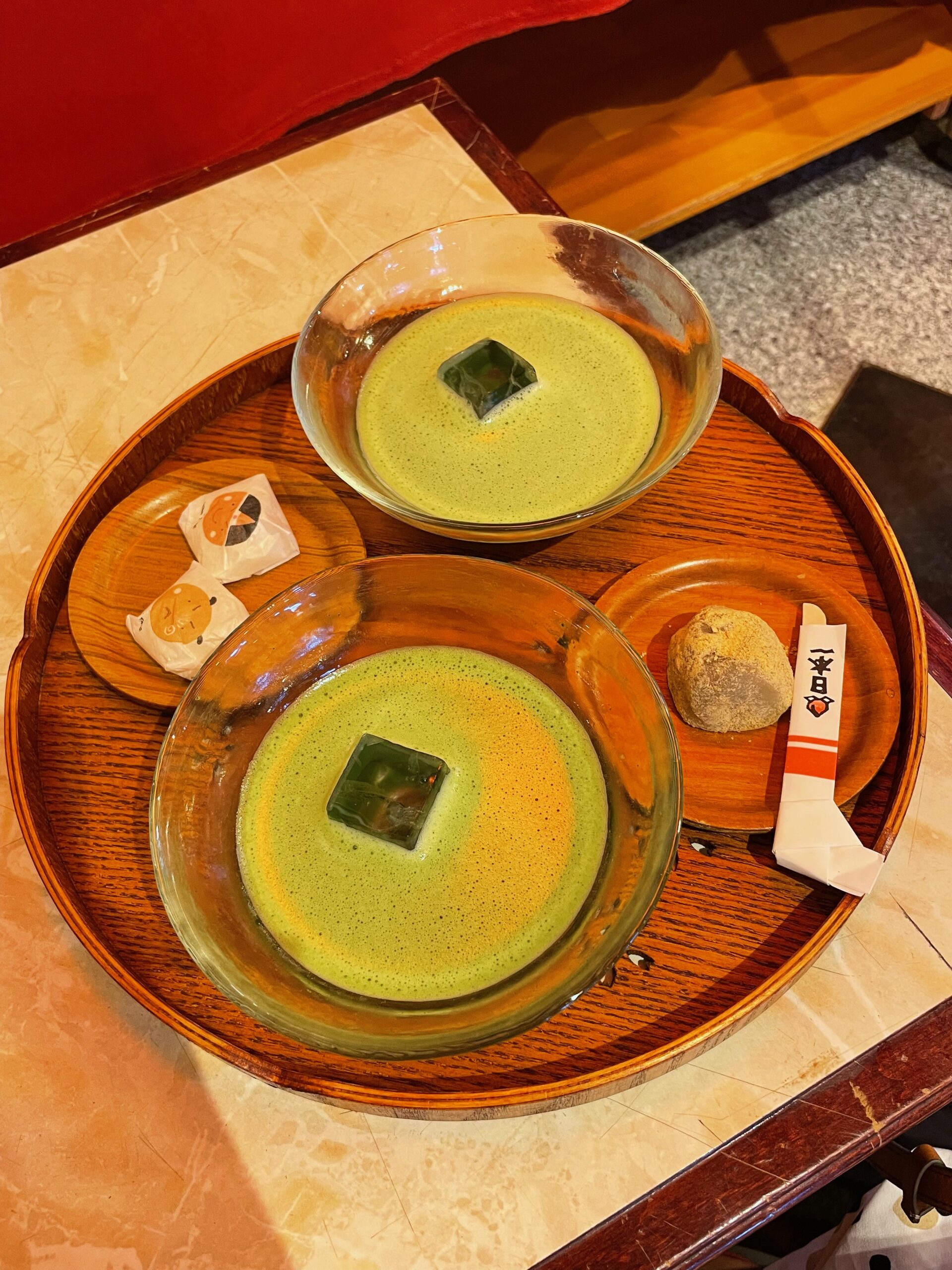 |
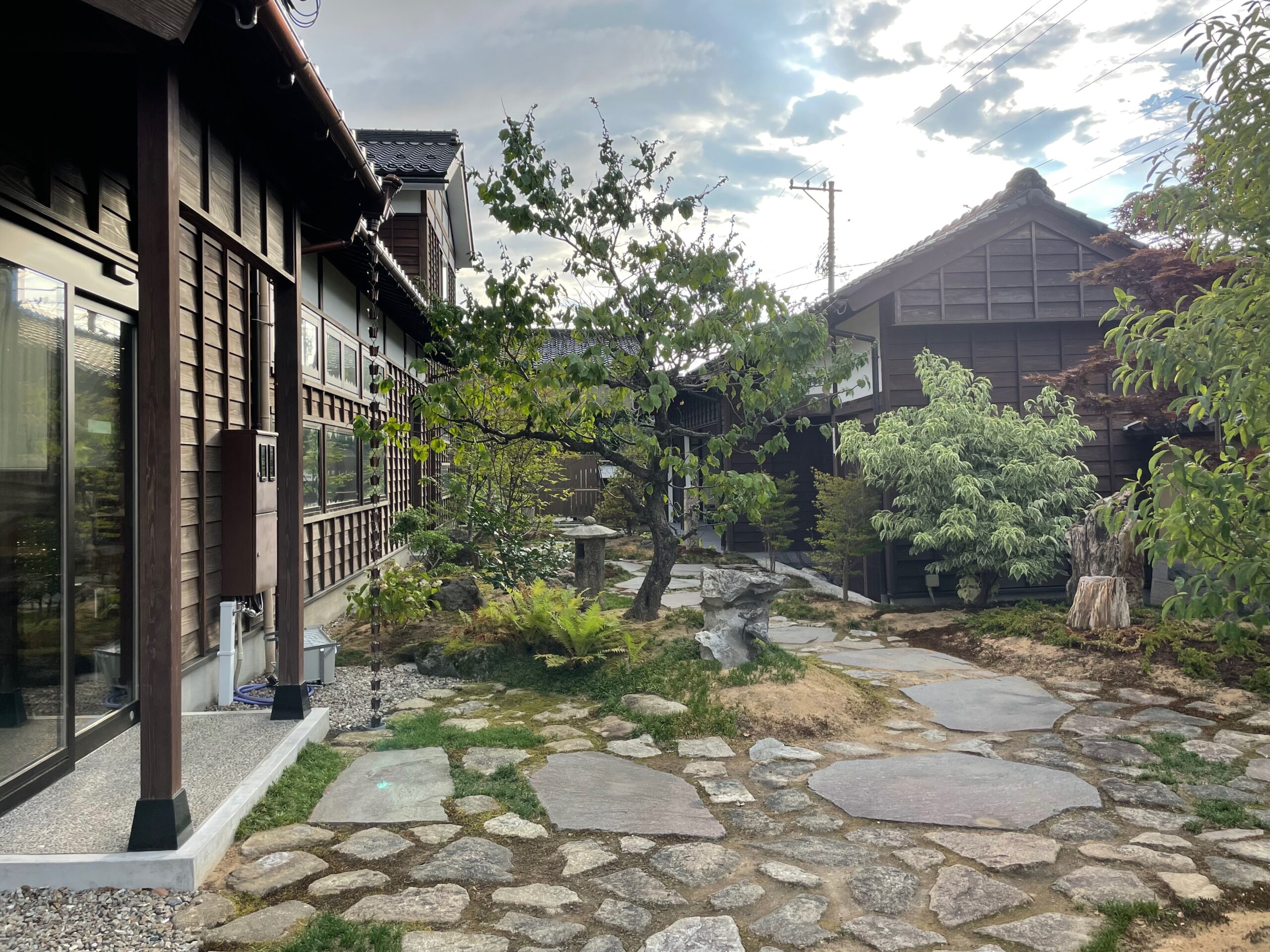 |
Day 2 & 3– KYOTO
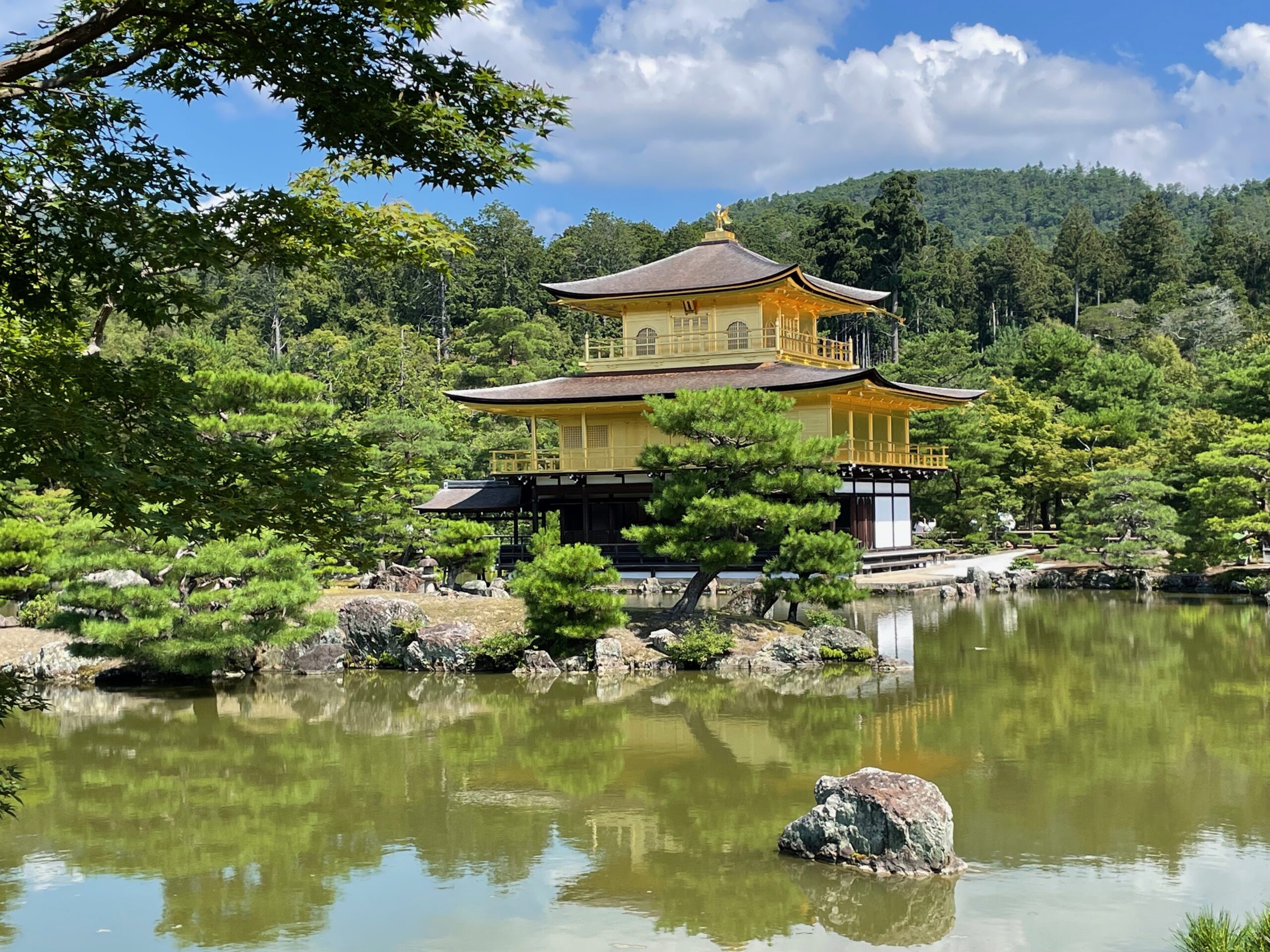 |
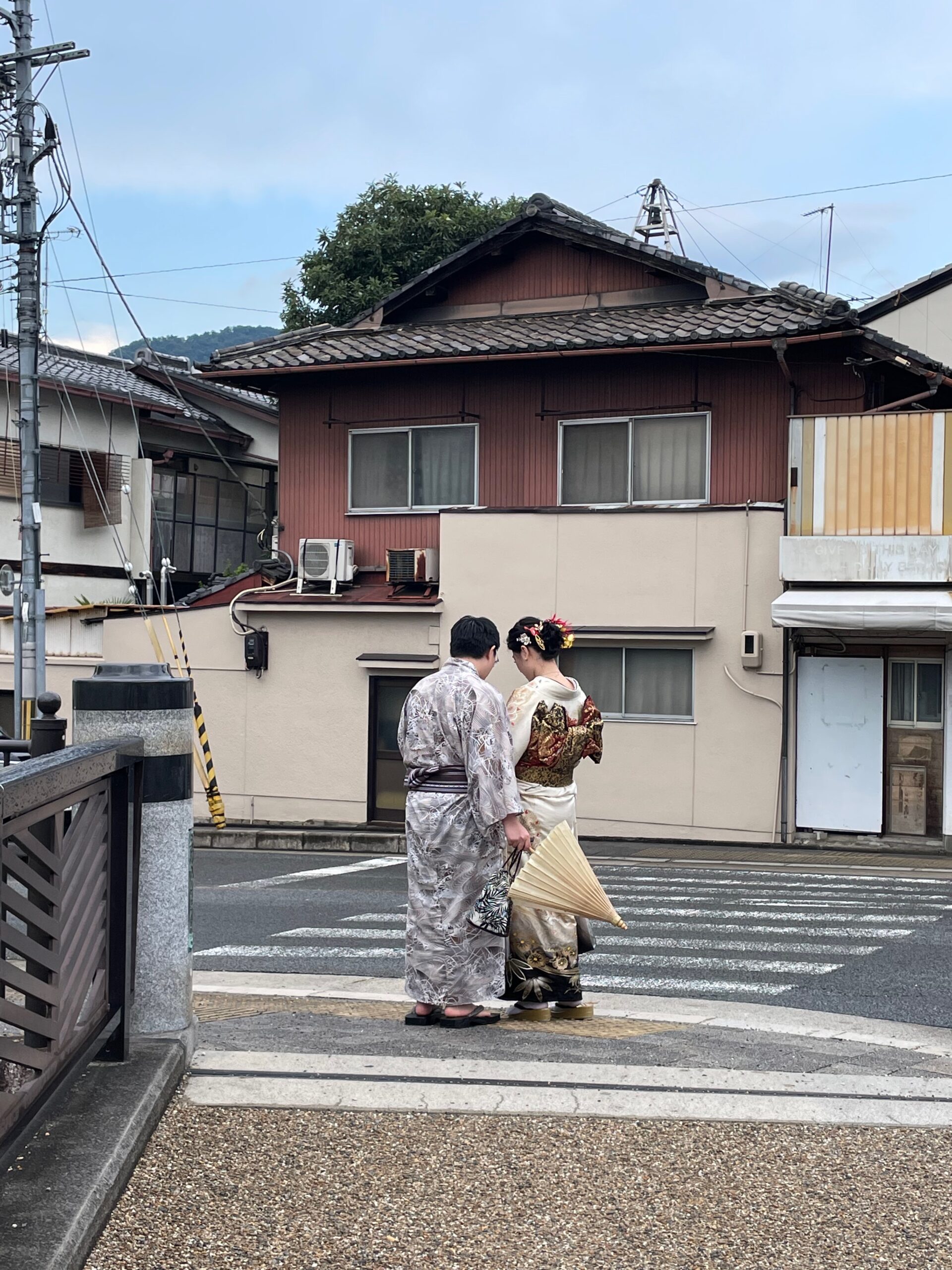 |
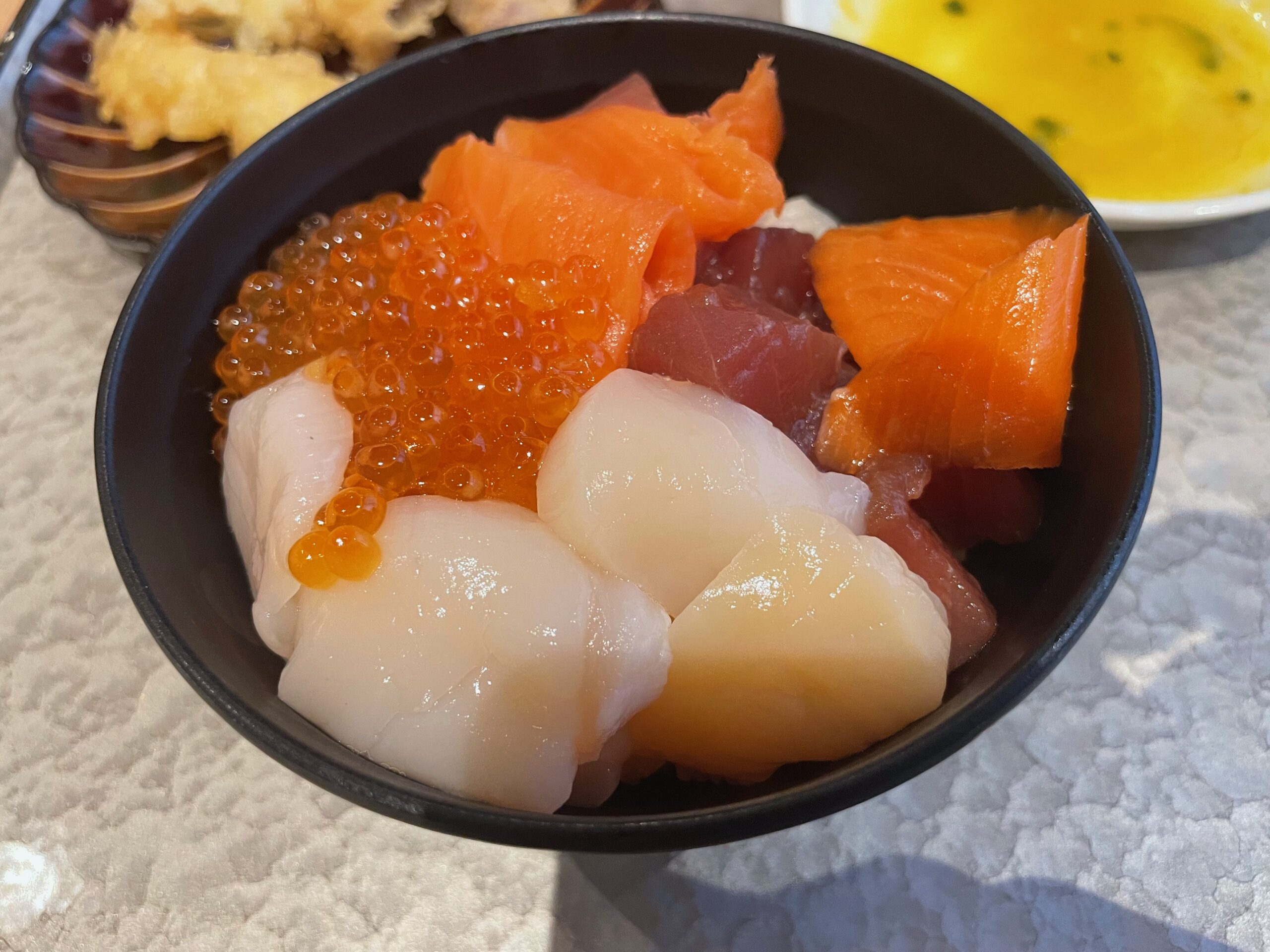 |
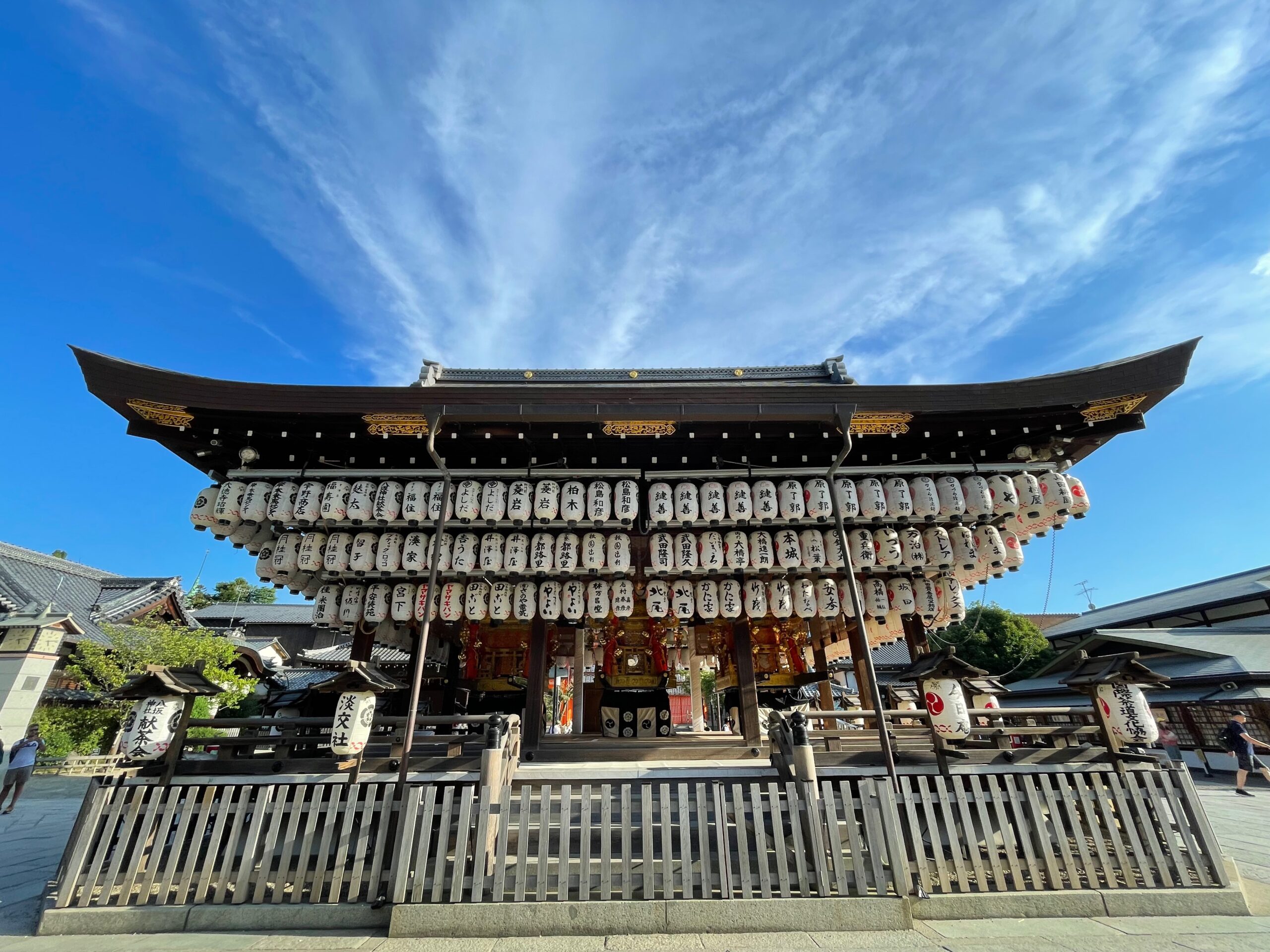 |
In the early morning of the second day of my JR pass I caught a direct Shinkansen to Kyoto. This is an easy two hours ride with many departures during the day so the journey is very efficient. We have deposited the luggage in our hotel and started exploration right away.
Kyoto, often referred to as Japan’s cultural capital, is a city brimming with history, tradition, and natural beauty. I have visited the city for second time but this time with my Husband so I repeated some part of the Kyoto’s itinerary since he has never been here before. However, Kyoto has such a unique atmosphere and with so many historical sites and temples hidden in the city and its proximity (in the gorgeous mountains) that I think I would be returning to Kyoto in my future visits too.
I think you need at least 2 full days to explore the city and at least 3 days to explore the area without rush and see also less touristy but equally precious sites hidden a bit away from the city centre.
To provide you some context Kyoto was the imperial capital of Japan for over a millennium, and it’s steeped in history. The city is home to numerous well-preserved historical sites, temples, and shrines that offer a glimpse into Japan’s ancient past. Kyoto boasts over 1,600 Buddhist temples and 400 Shinto shrines. The must see are Kinkaku-ji (the Golden Pavilion), Ginkaku-ji (the Silver Pavilion), Fushimi Inari Taisha with its thousands of red torii gates, and Kiyomizu-dera, known for its wooden stage that juts out over a hillside. Kyoto is also one of the few places in Japan where you can experience traditional geisha culture. The Gion district is famous for its geisha and maiko (apprentice geisha), and you can see them in their traditional attire, or even arrange to attend a tea ceremony or a traditional dance performance.
Day 4 – UJI & ARASHIYAMA
The 4th day I have departed by local train from Kyoto (I stayed in the same hotel and kept Kyoto as my base city) to see nearby Uji and the Bamboo Grove in Arashiyama. Uji is an easy 30 minute ride by a local train from Kyoto with many departures per hour throughout the day.
Uji is renowned as the green tea capital of Japan. It’s famous for producing some of the highest-quality matcha (green tea) in the country. You can visit tea plantations, experience traditional tea ceremonies, and taste a variety of matcha-based products like matcha ice cream and matcha-flavored confections. While Uji is not far from Kyoto, it offers a more serene and rural atmosphere, providing a pleasant contrast to the bustling urban areas of Japan. Uji is also a home to several beautiful temples that are worth visiting such as Byodoin Temple, Uji Shrine or Kosho-ji Temple.
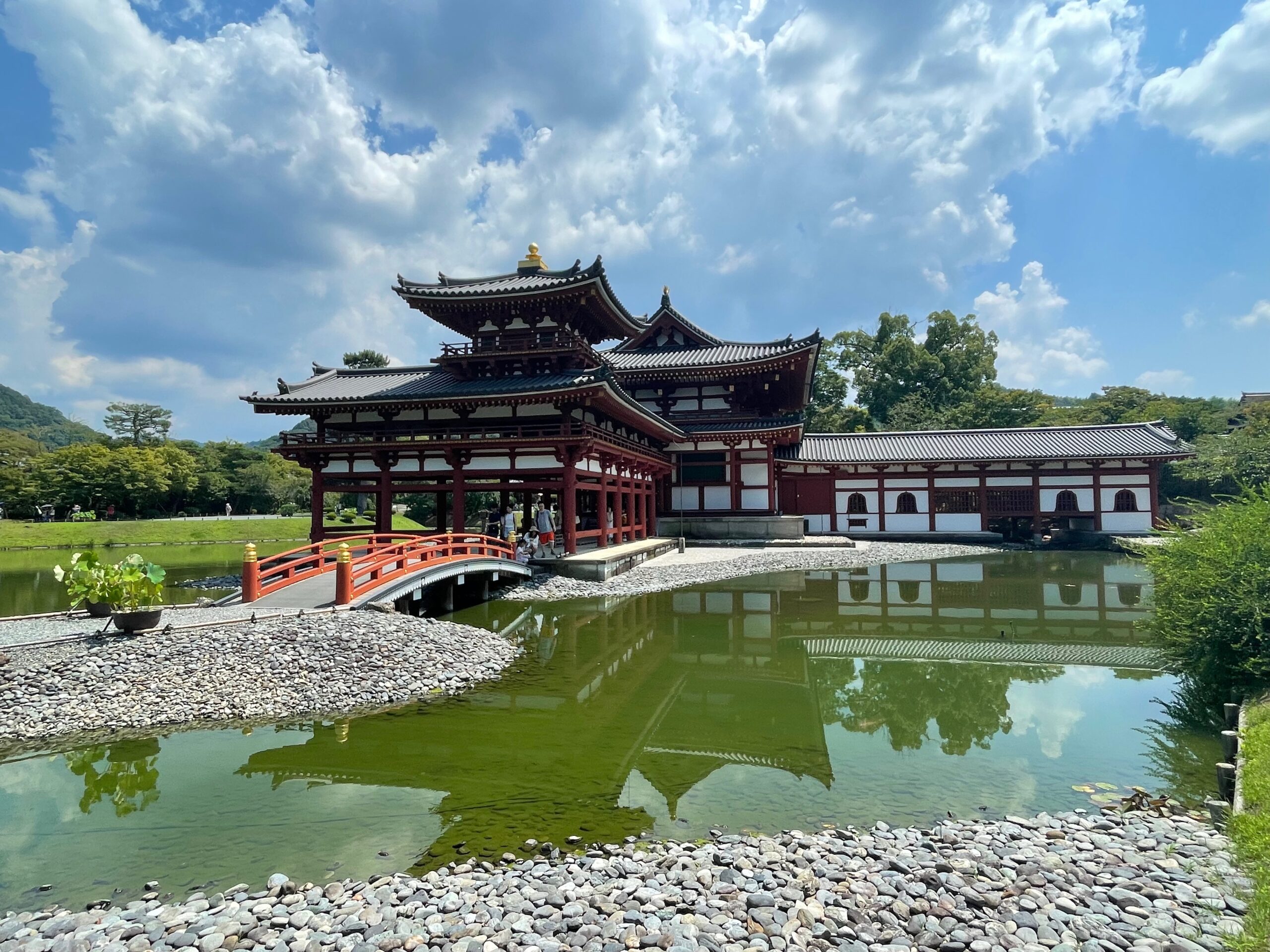 |
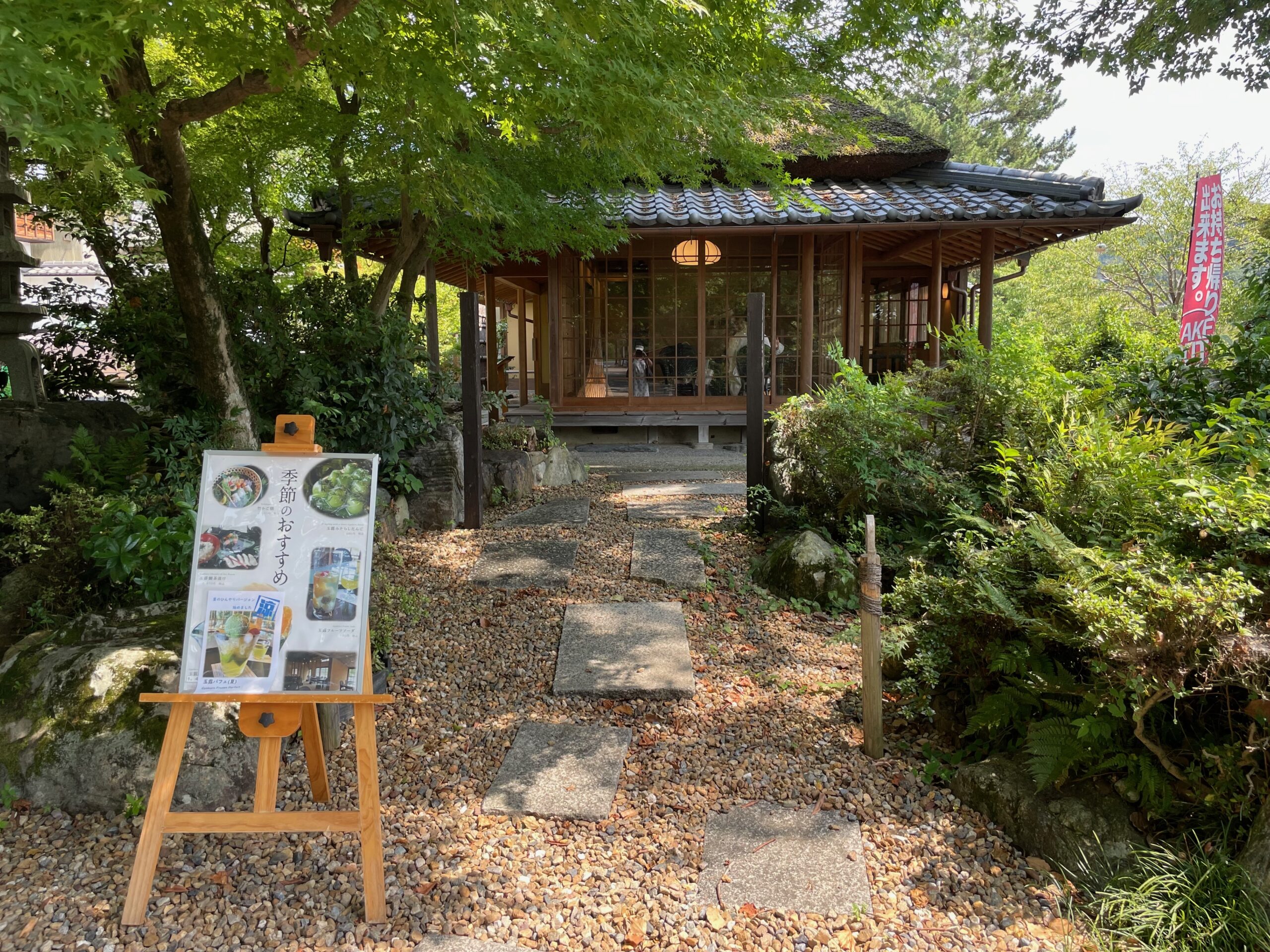 |
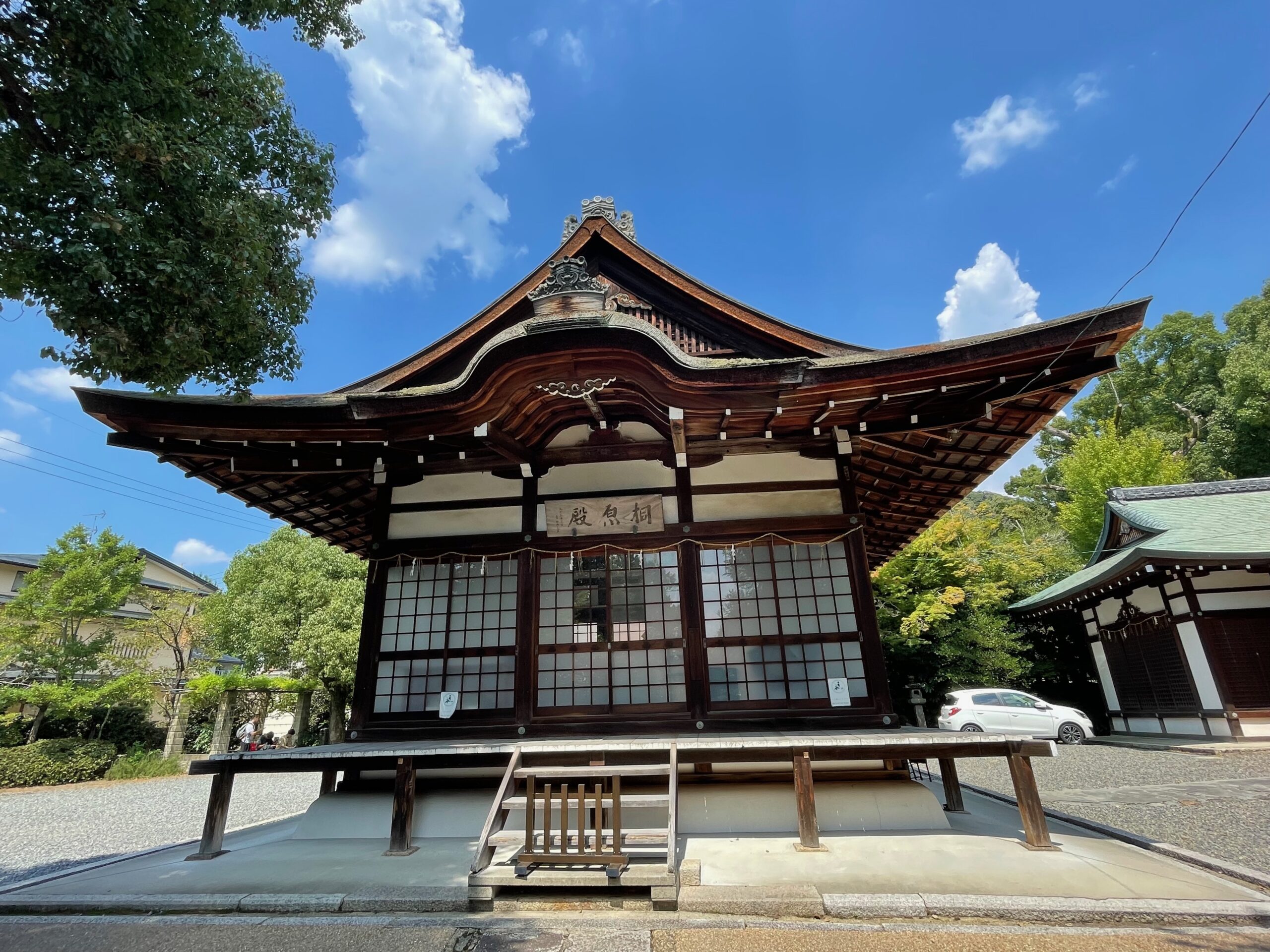 |
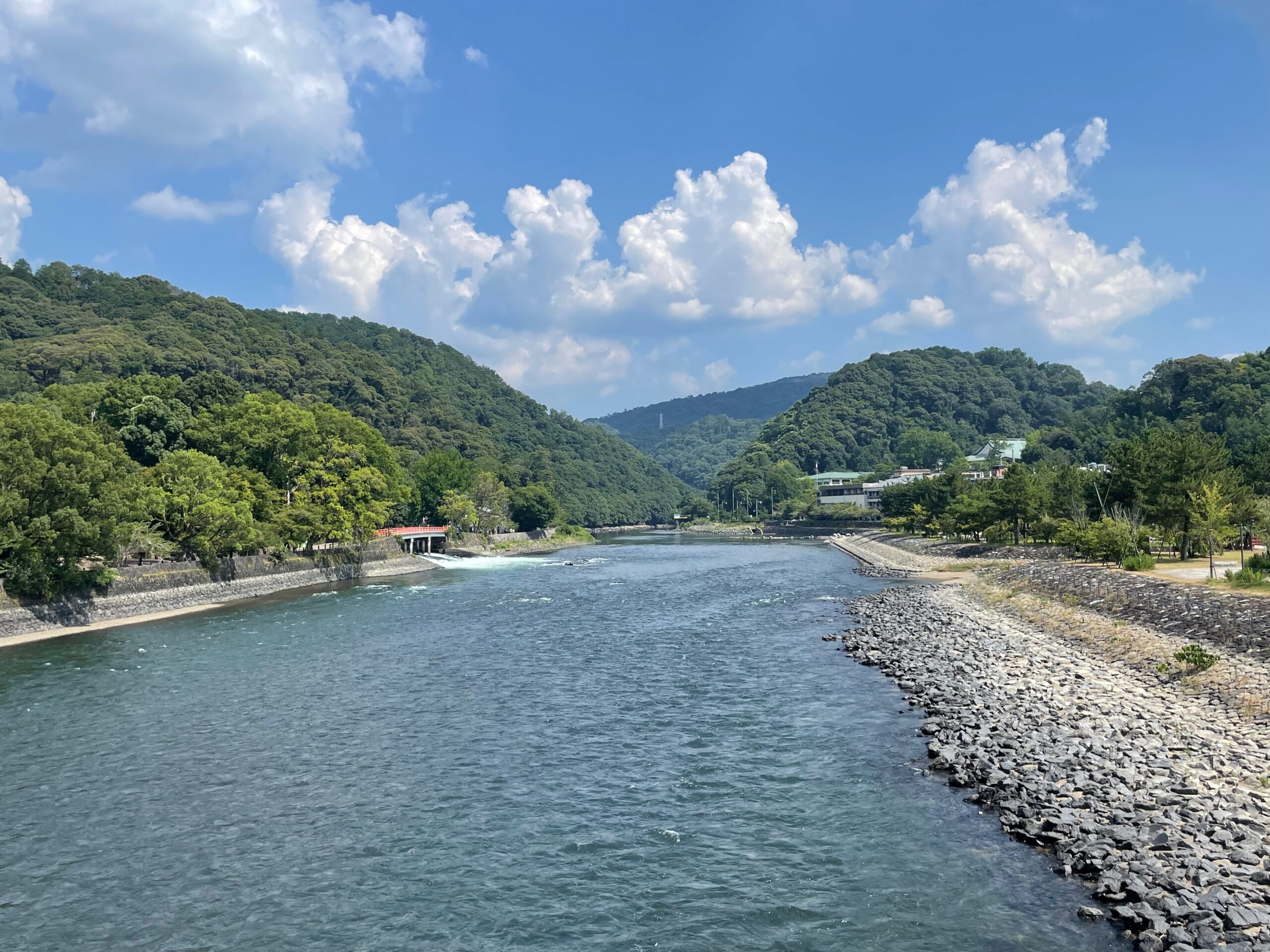 |
After Uji we hopped on a local train and travelled to Saga-Arashiyama Station (in fact you will need to change once or twice and the journey takes around 1hour 15 minutes). From there it takes around 10 minutes walk to get to the bamboo grove and main historical temples in the town.
The Bamboo Grove is one of Arashiyama’s most iconic and picturesque attractions. The towering bamboo stalks create a serene and magical atmosphere. It’s particularly enchanting in the early morning or late afternoon when the sunlight filters through the bamboo. The path is very easy and not long, however it was very crowded in the afternoon. I recommend coming here early in the morning to avoid large congestion of tourists and go to Uji later in the day. When in the area I recommend visiting Tenryu-ji Temple which is historical a renowned Zen Buddhist temple classified as UNESCO World Heritage site. The temple is located just on the way from the train station to the bamboo grove.
Since the path through the bamboo grove is relatively short I recommend prolonging it in Okochi Sanso Villa and its gardens at the end of the route. The garden is set against the backdrop of the Arashiyama mountains, providing breathtaking panoramic views of the surrounding natural beauty. It is divided into several distinct areas, each with its unique features, including walking paths, stone bridges, ponds, and meticulously manicured landscapes. Okochi Sanso Garden includes a traditional Japanese tea house known as “Okochi Sanso Chōnan-tei.” Visitors can enjoy a cup of matcha tea (included in the entrance fee) while admiring the garden’s scenic beauty. The tea house is a serene and peaceful spot, perfect for a moment of contemplation. Arashiyama is also famous for its Sagano scenic railway also known as the “Romantic Train” (not included in the JR pass though). This old-fashioned train takes you on a picturesque journey through the Hozugawa River Valley, providing scenic views of the area’s natural beauty.
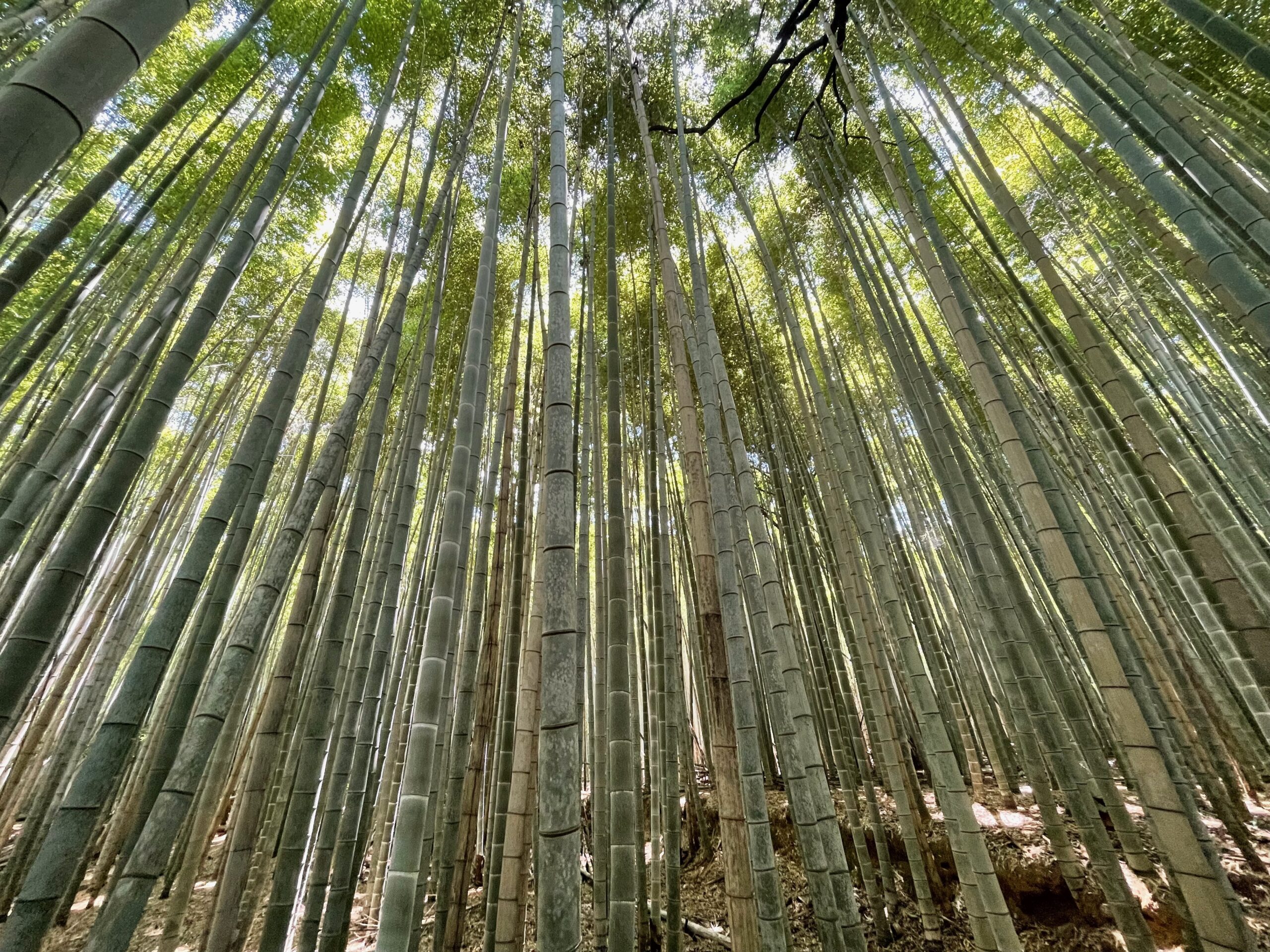 |
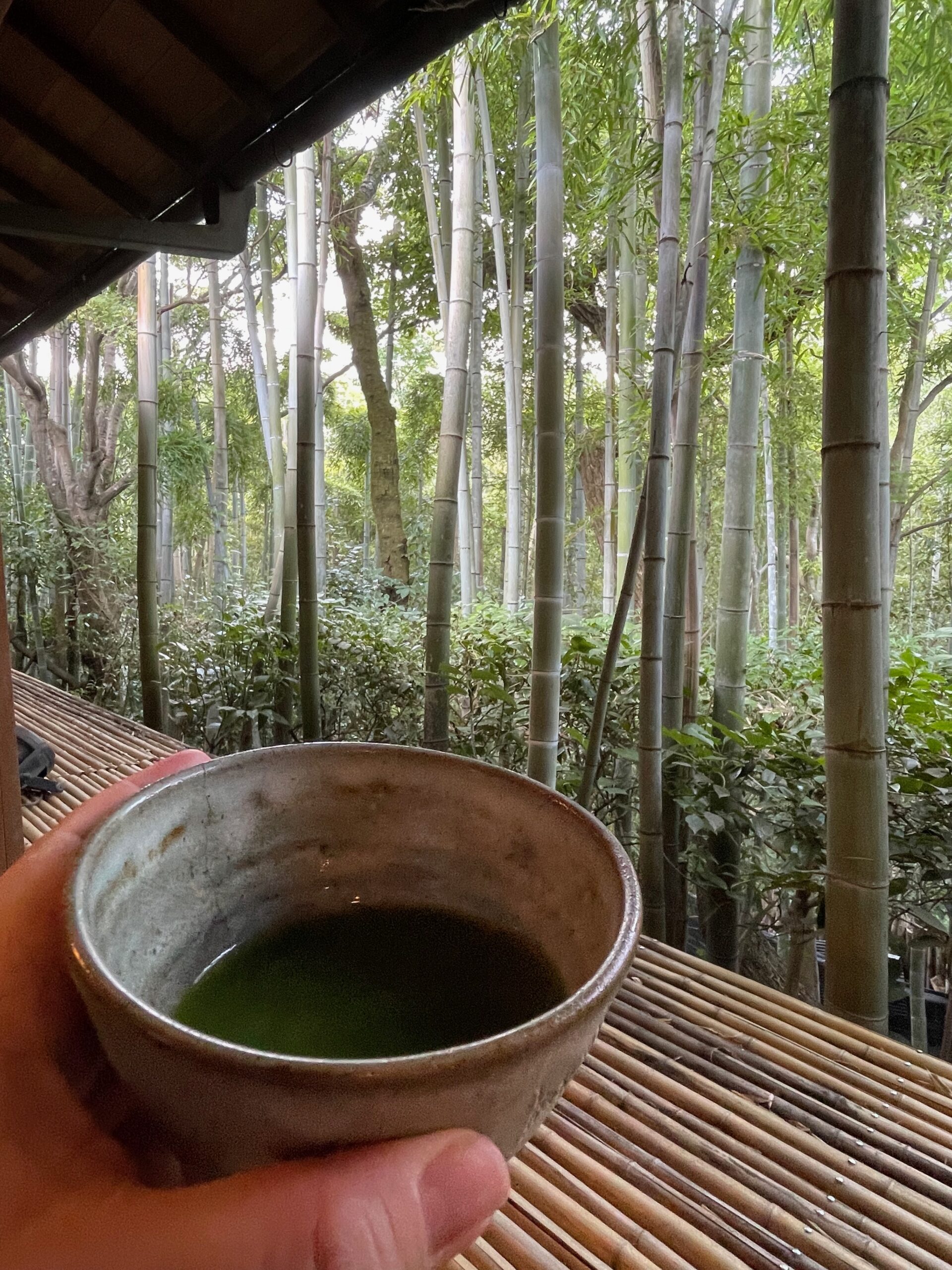 |
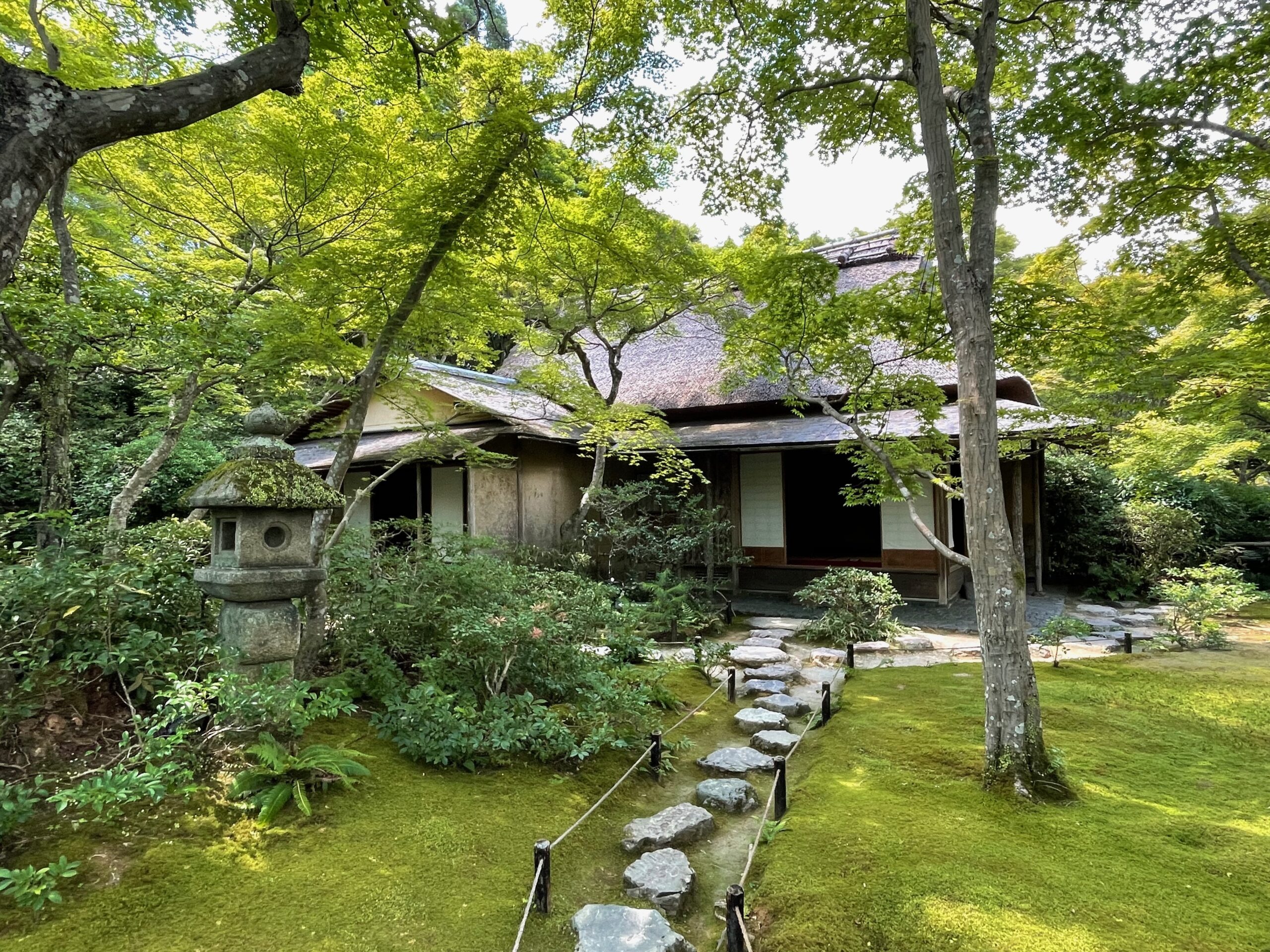 |
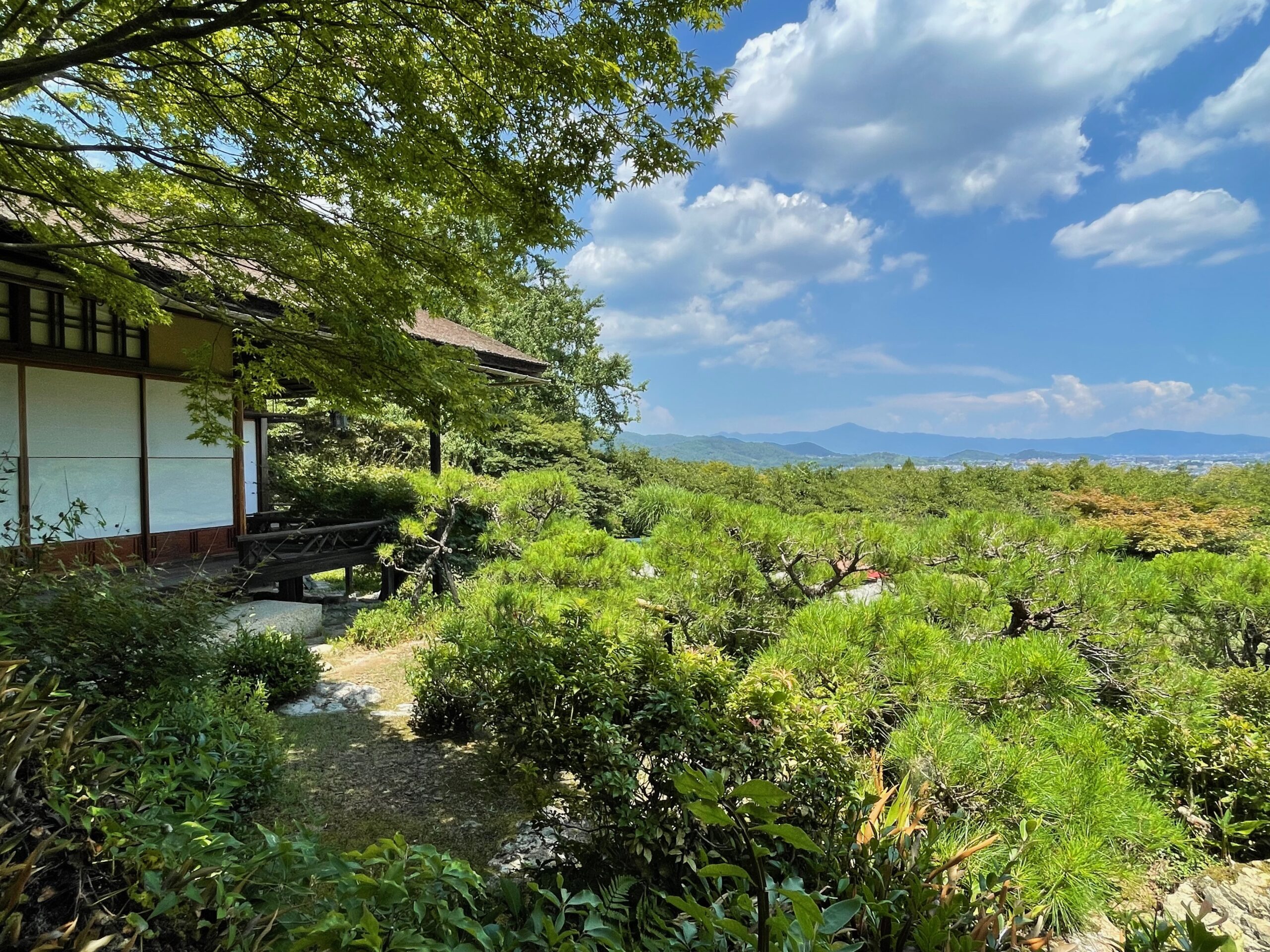 |
A short 30 minutes ride takes you from Arashiyama back to Kyoto station and the rest of the day can be continued to walk through the historical streets of Tokyo or relax in your hotel. In our case, our hotel had a private onsen just for its guests so we spent a very nice evening gaining energy for our next explorations.
Day 5: OSAKA & KOBE
The next day we checked out from our hotel in Kyoto and went to Osaka. This is only a 15 minute ride by Shinkansen with many departures during the day. If you plan to make day trips from Osaka I recommend staying in the hotel close to Shin-Osaka station where the Shinkansens are stopping.
We have stayed in Osaka for half of the day. The city is one of the country’s most dynamic and exciting destinations, offering a unique blend of tradition and modernity. Known for its rich history, delicious street food, and friendly locals, Osaka is often referred to as the “Kitchen of Japan” and the “Nation’s Kitchen” due to its culinary significance. We have walked around the city starting from from high-end department stores to bustling shopping streets like Shinsaibashi and Namba. Next, we went to Dotonbori area which is famous for its neon-lit signs and vibrant atmosphere, making it a great place for both shopping and dining.
Osaka is an amazing destination for foodies, the city is renowned for its diverse and delicious food culture. Street food is a major attraction, and you can sample local specialties like takoyaki (octopus balls), okonomiyaki (savory pancakes), and kushikatsu (deep-fried skewers) in the bustling Dotonbori district.
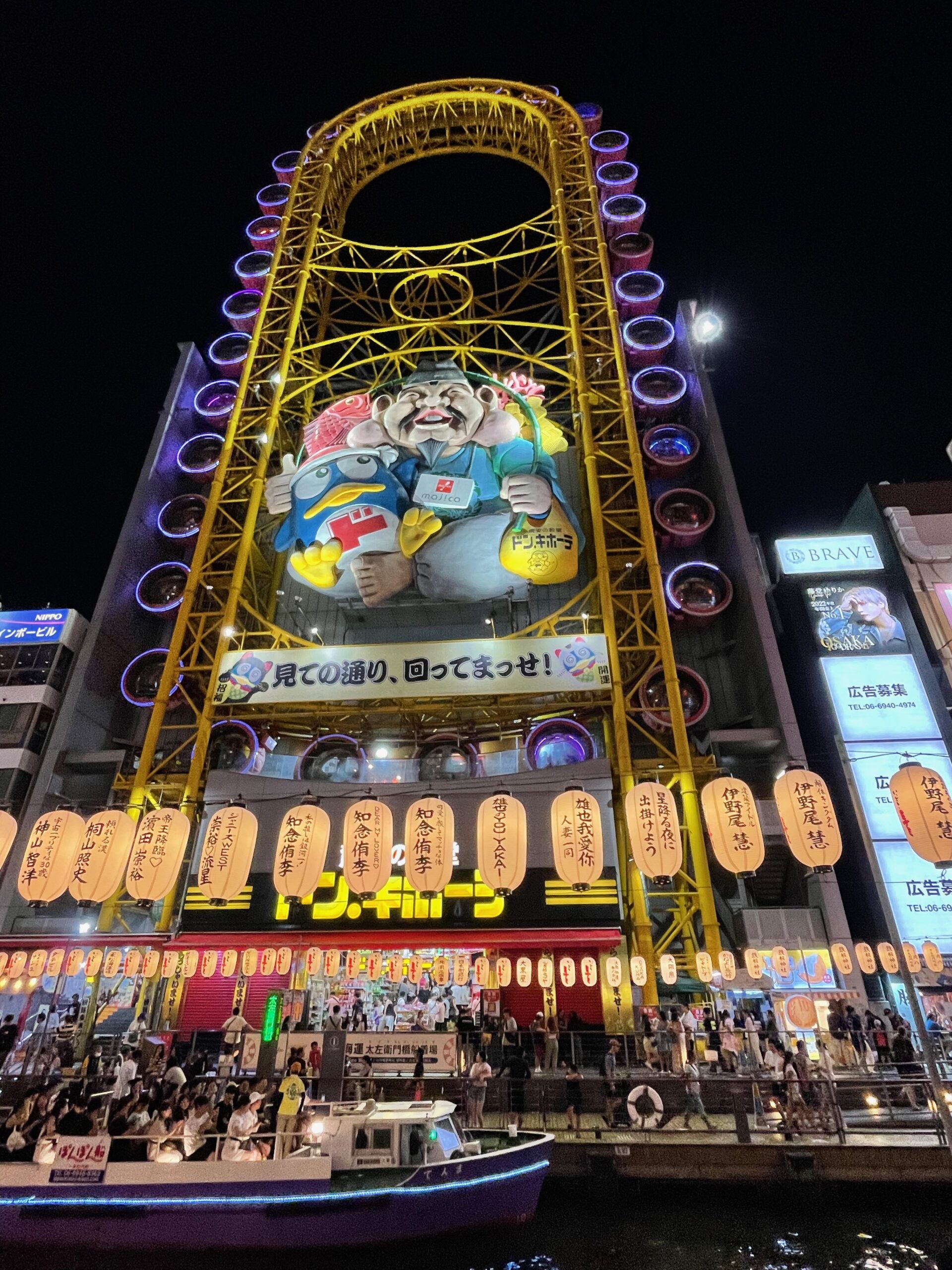 |
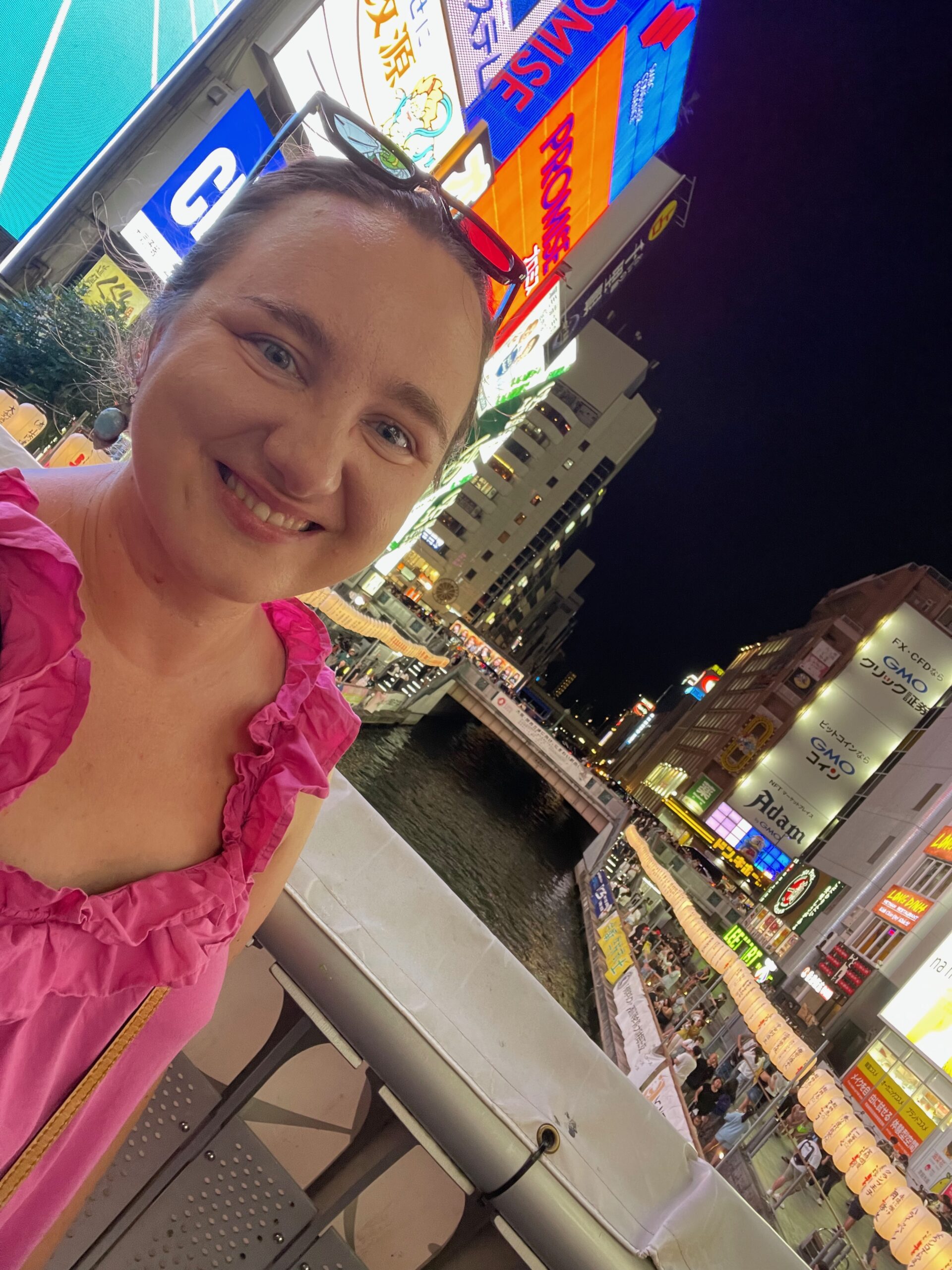 |
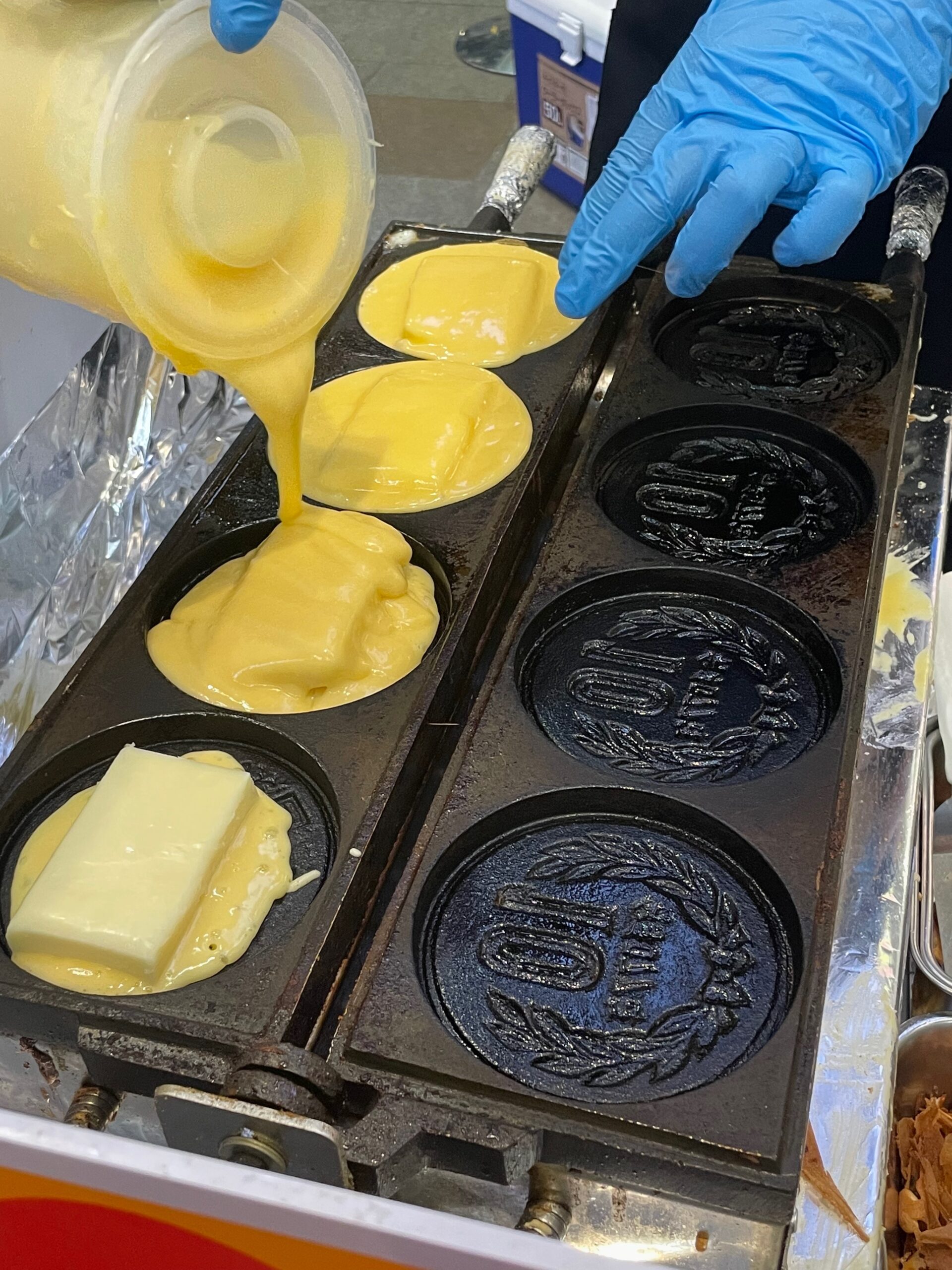 |
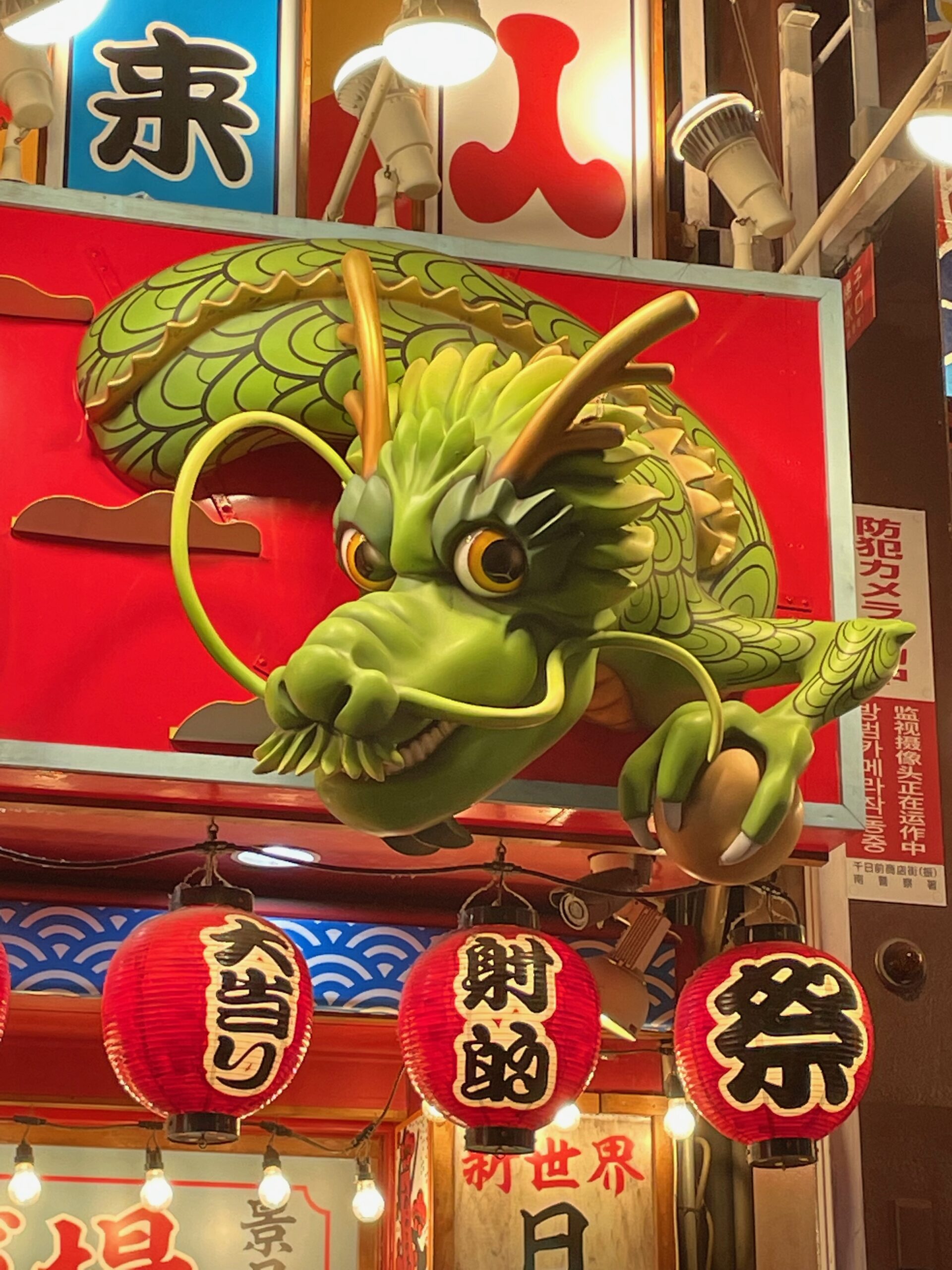 |
In the afternoon we took a short ride to nearby Kobe. This is just a quick 40 minutes journey to land in the city famous for its exquisite beef.
We have spent few hours in Kobe starting from sake tasting, Kobe is home to several sake breweries, and many of them offer guided tours and tastings. Some of the well-known breweries include Hakutsuru Sake Brewery Museum, Nada Sake Brewery District, and Sawanotsuru Sake Museum. Hakutsuru Sake Brewery Museum is one of the most popular choices for visitors. It provides a comprehensive tour of the sake-making process and allows you to taste a variety of sake products. You may want to book a tour in advance since some of the breweries organize visits only with prior reservations.
Next we had a walk around the Western District of Kobe, often referred to as “Kobe Kitano Ijinkan” or simply “Kitano”. This is a charming and historic neighborhood that offers a unique blend of Western and Japanese culture. This area is known for its well-preserved Western-style houses, stunning architecture, and a nostalgic atmosphere.
And finally, we have concluded our short stay in Kobe with the famous beef tasting! Kobe beef is famous for its exceptional quality and unique characteristics, which make it one of the most highly regarded and sought-after types of beef in the world. It is renowned for its high degree of marbling, which refers to the intramuscular fat distribution within the meat. The intricate web of fat throughout the muscle gives the meat its exceptional tenderness, juiciness, and rich flavor. The intense marbling is a result of the cattle’s genetics and the specific feeding regimen. All those exceptional qualities come from the fact that Kobe beef is made from a specific breed of cattle known as Tajima, which is one of the four Japanese Wagyu breeds. These cattle are raised under strict guidelines in the Hyogo Prefecture, where Kobe is located. The care and feeding of Kobe beef cattle are meticulous. Cattle are typically fed a special diet that includes a mix of grains, rice straw, and other nutritious components. They may also receive beer or sake to stimulate their appetites and help with digestion. The cattle are raised in a stress-free environment, which is believed to contribute to the meat’s quality.
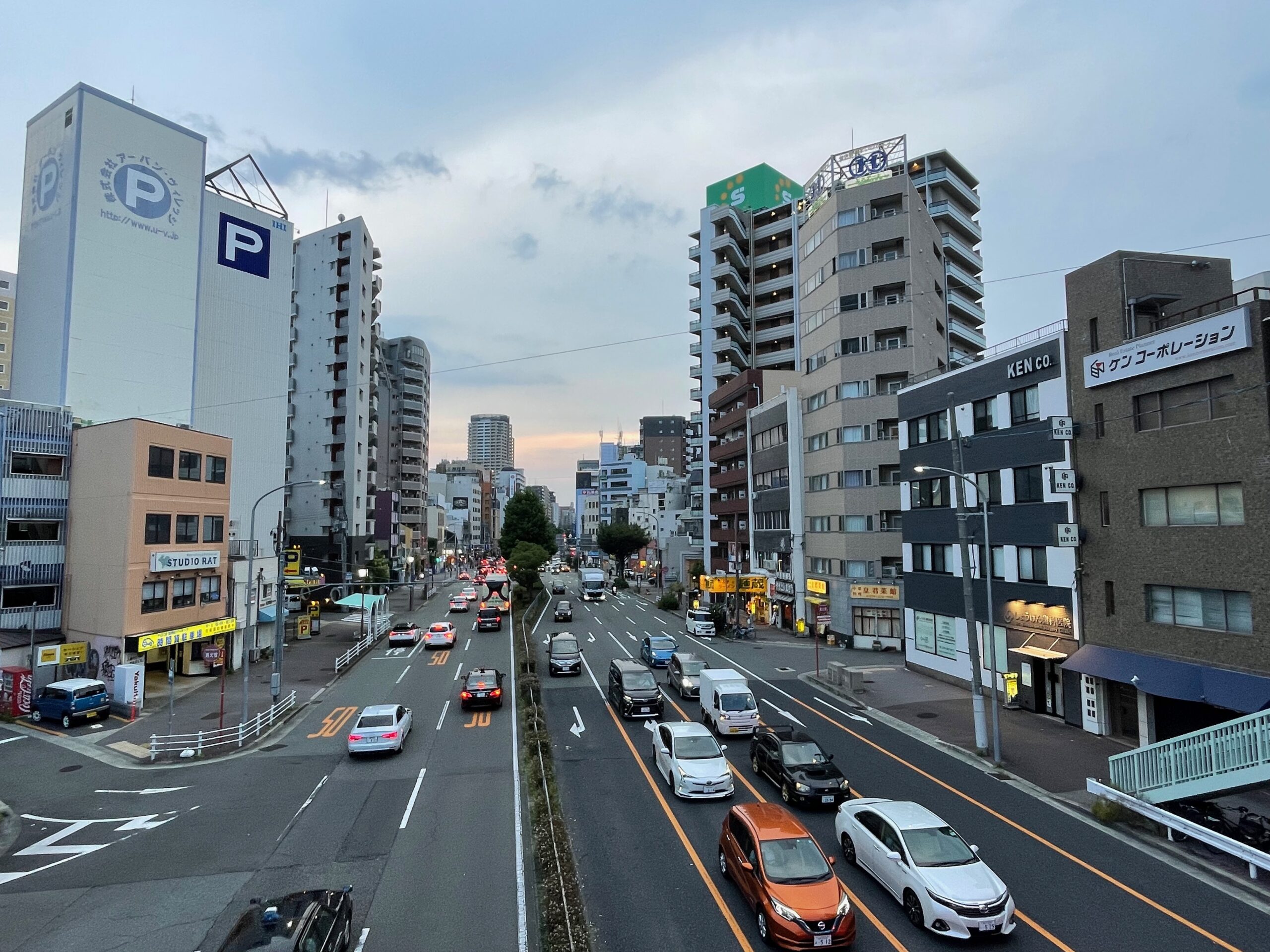 |
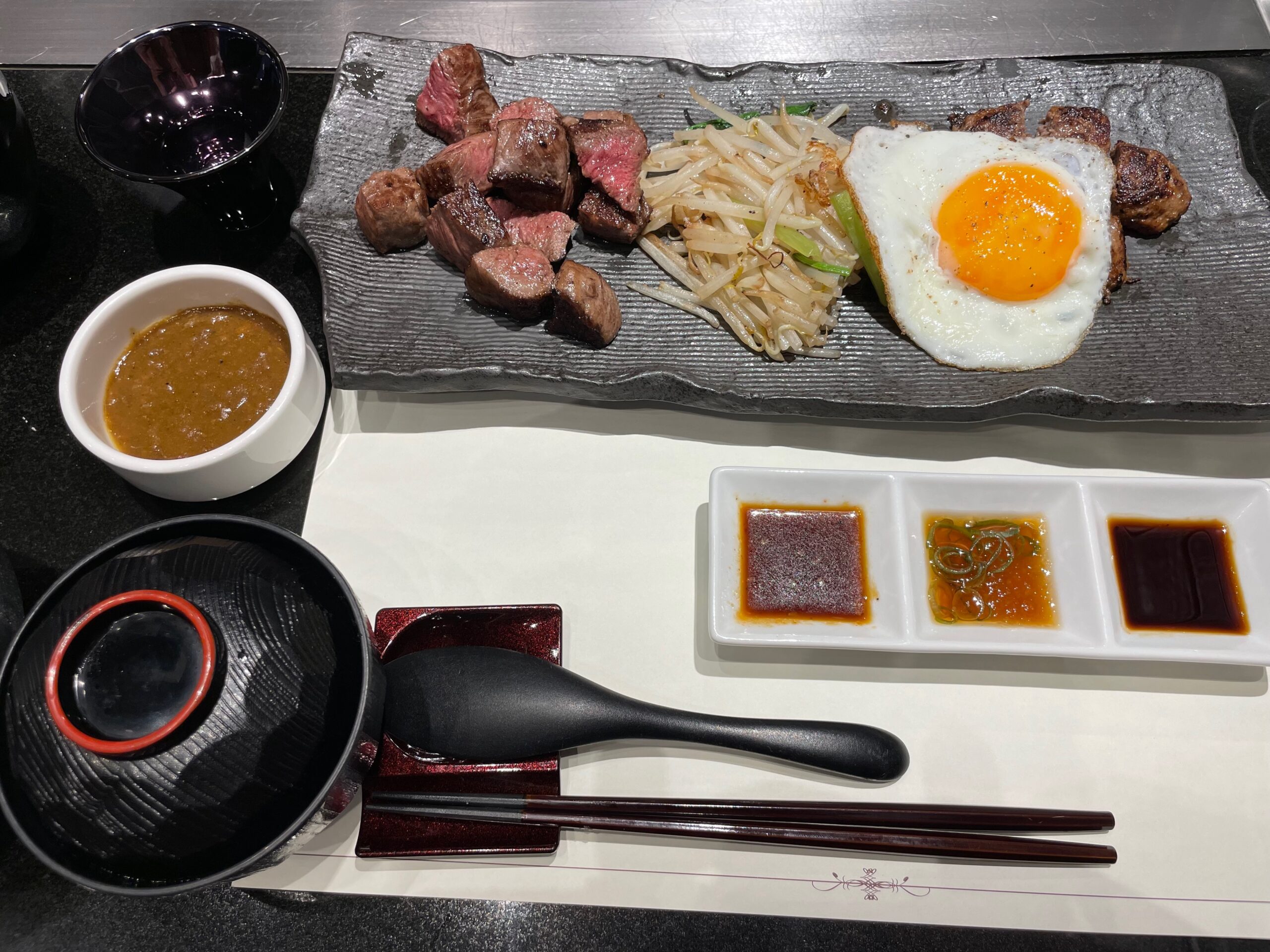 |
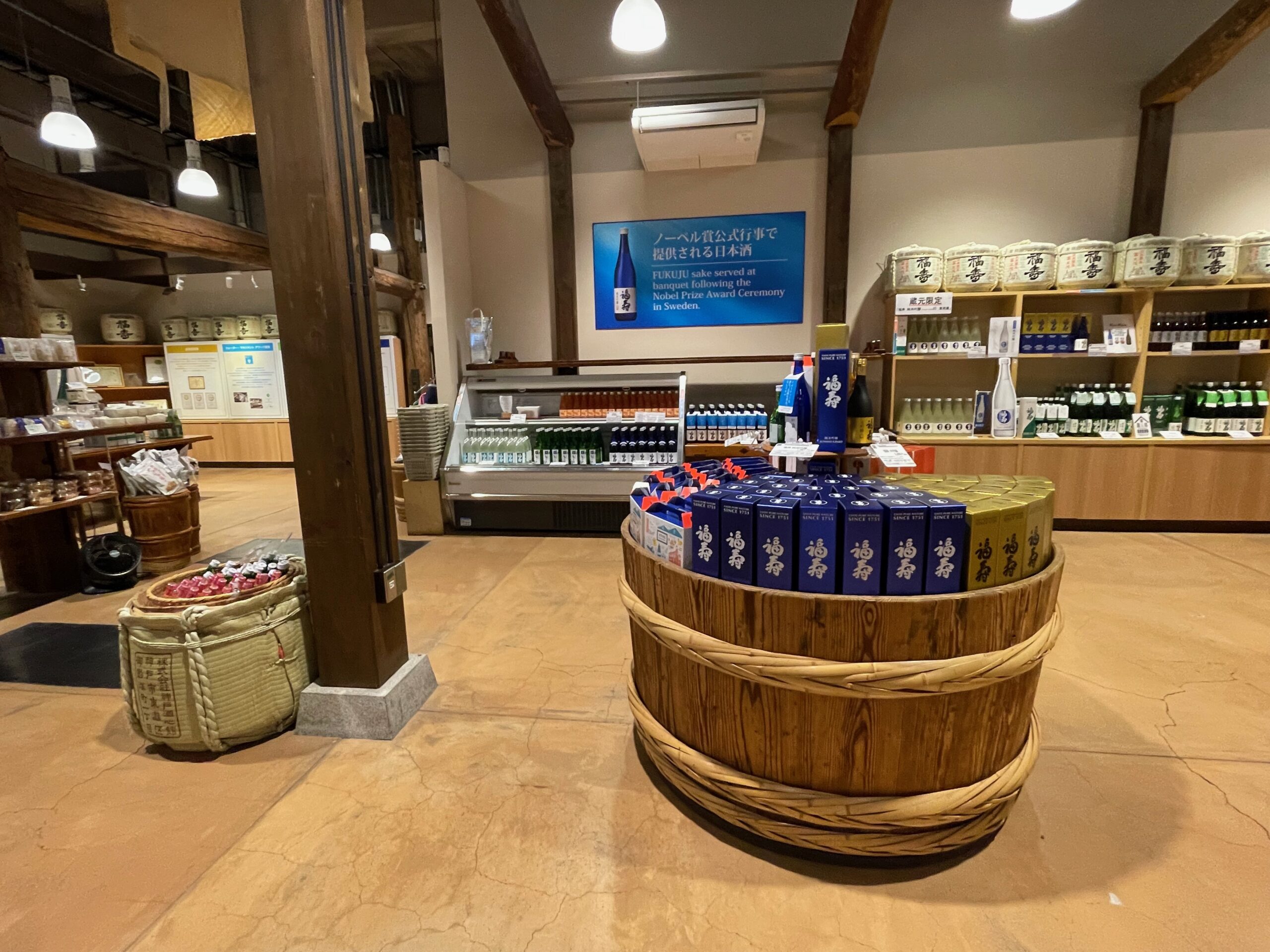 |
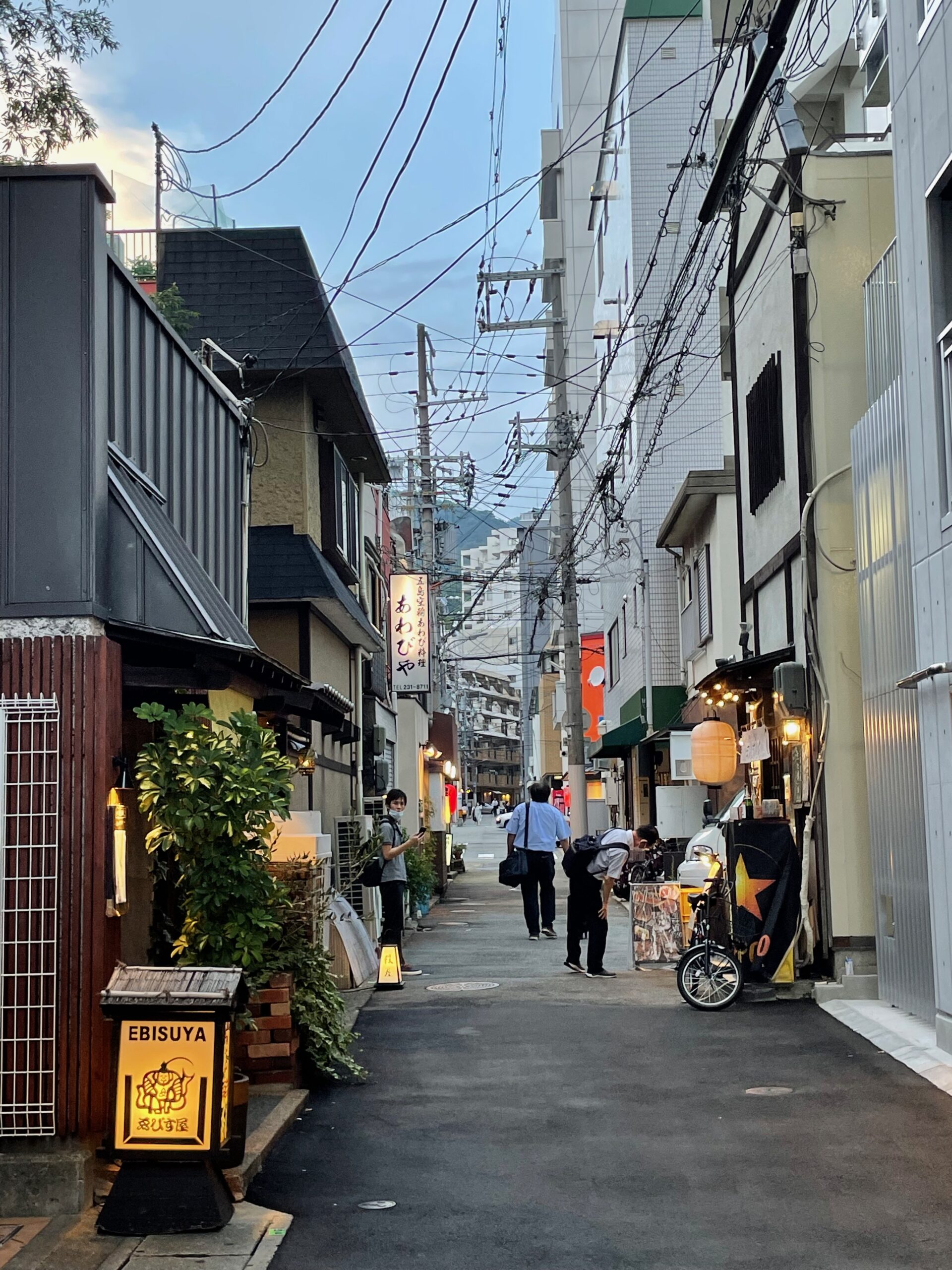 |
After delicious dinner we came back to Osaka and walked in the evening around beautifully lit area of Dotonbori.
Day 6: OKAYAMA & KURASHIKI
We have checked out from our hotel in Osaka early in the morning and caught our Shinkansen to Okayama. It takes 45 minutes to get to the charming city of Okayama and the train goes through pleasant rural areas of Japan which was very entertaining.
Okayama is an interesting city in the Chugoku region of Japan and being a bit aside of the tourist route, has a very authentic vibe, we were one of the very few foreign visitors who came to spend a day in the city.
One of the main attractions of Okayama is its castle, the construction is also very amous all over Japan because of its distinctive black exterior, earning it the nickname “U-jo” or “Crow Castle.” The black facade was unusual among Japanese castles, as most were constructed with white plaster walls. Apart of its unusual color, the construction is one of Japan’s renowned “original castles,” which means that it has survived in its original form without significant reconstruction. Unfortunately, the castle was destroyed during the Second World War and what we see now is a reconstruction. This influenced the interiors which host a museum but don’t have many original elements which are typical to Japanese castles. However, the Japanese castles are very different than those which we know from Europe so I encourage to at least have a walk around it to appreciate its architecture. You don’t need to pay to enter the castle’s grounds, however there is an entrance fee to the museum inside of it. Many information in the museum is in Japanese only, however the artefacts from the era of samurai are very interesting. I think despite of very little description in English the museum is still worth a visit, however if you’re short of time, it’s completely fine to inspect the building solely from outside.
Another interesting attraction in Okayama is Korakuen Garden which is one of Japan’s most renowned traditional gardens, Korakuen is a designated “Special Place of Scenic Beauty.” This spacious garden is known for its stunning landscapes, seasonal beauty, teahouses, and a central pond. It’s an ideal place to relax and enjoy the tranquility of nature. If you’re a nature lover or want to learn more about traditional Japanese gardens or just want to spend some time to relax (or take a part in traditional tea ceremony in a beautiful scenery), then plan to spend 1-2 hours in Korakuren. The garden is just few steps away from the Okayama Castle.
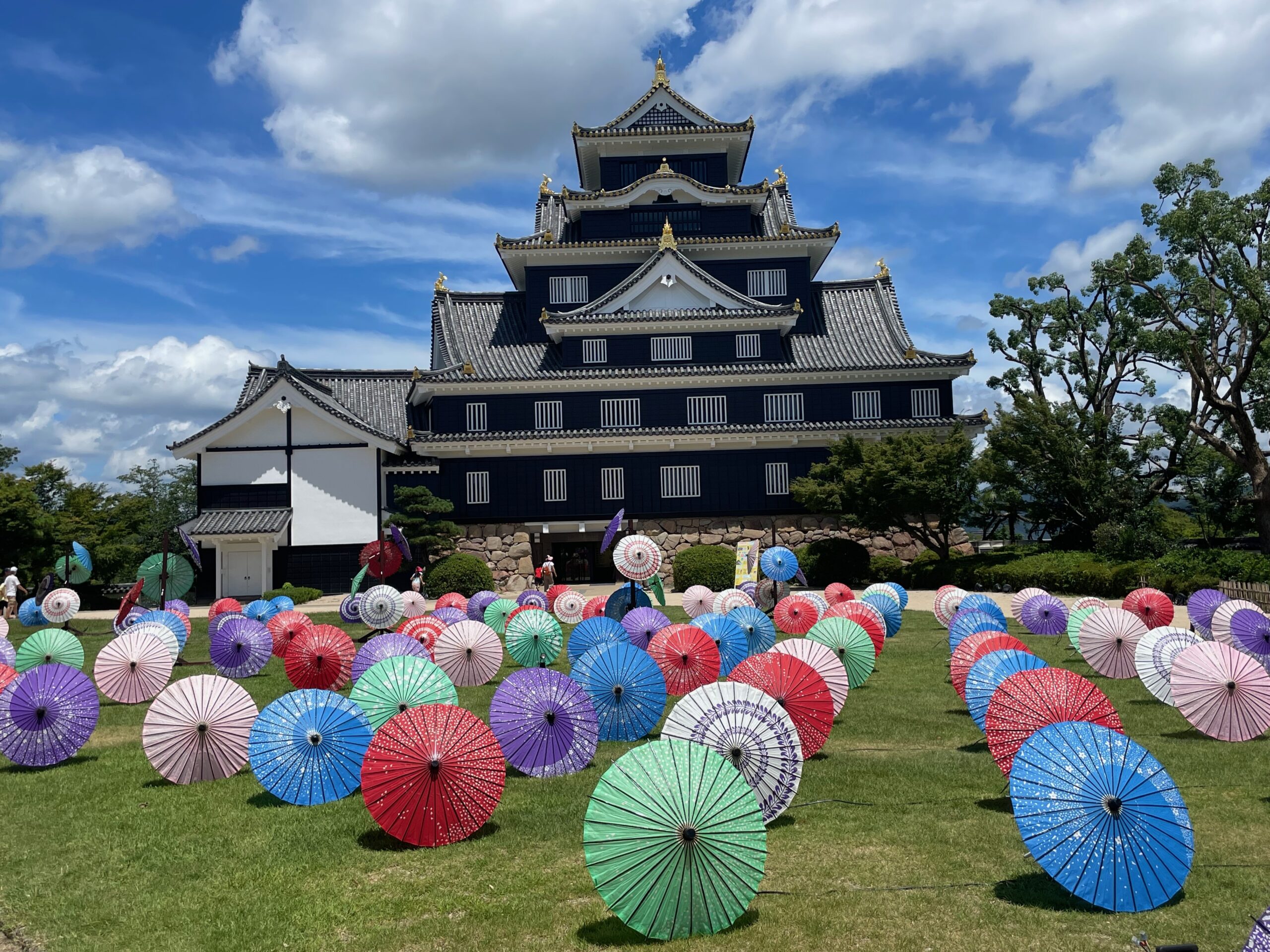 |
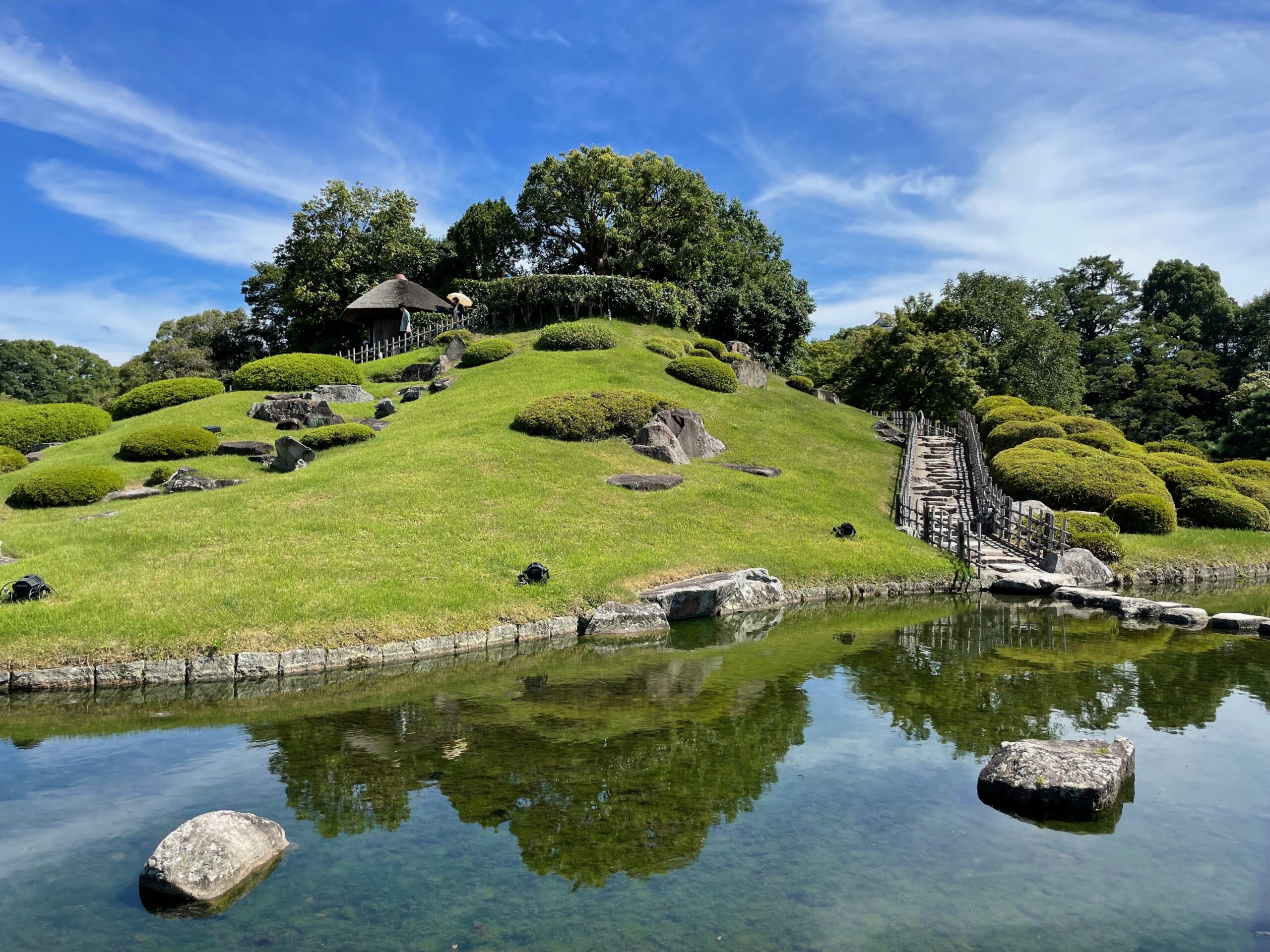 |
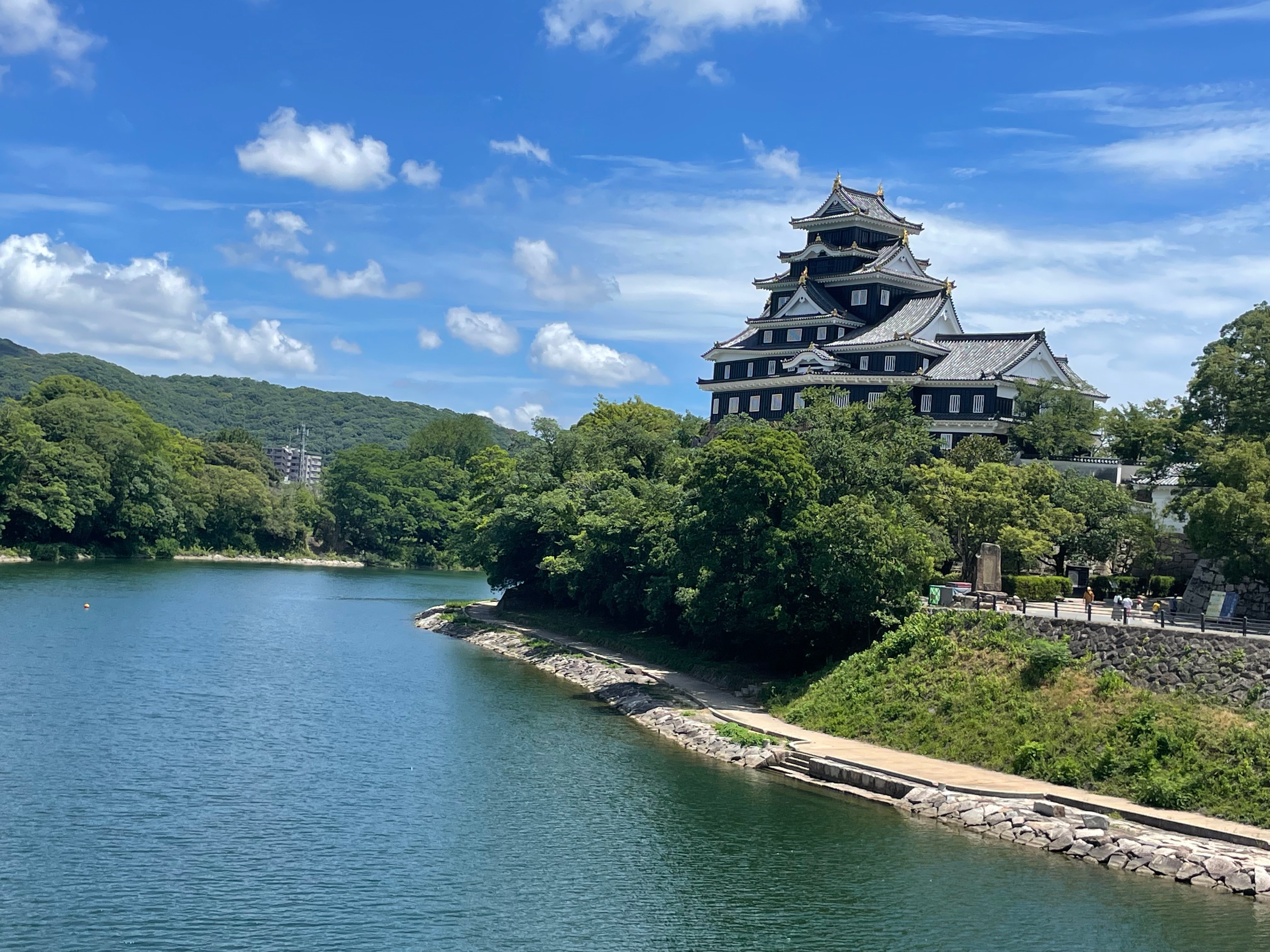 |
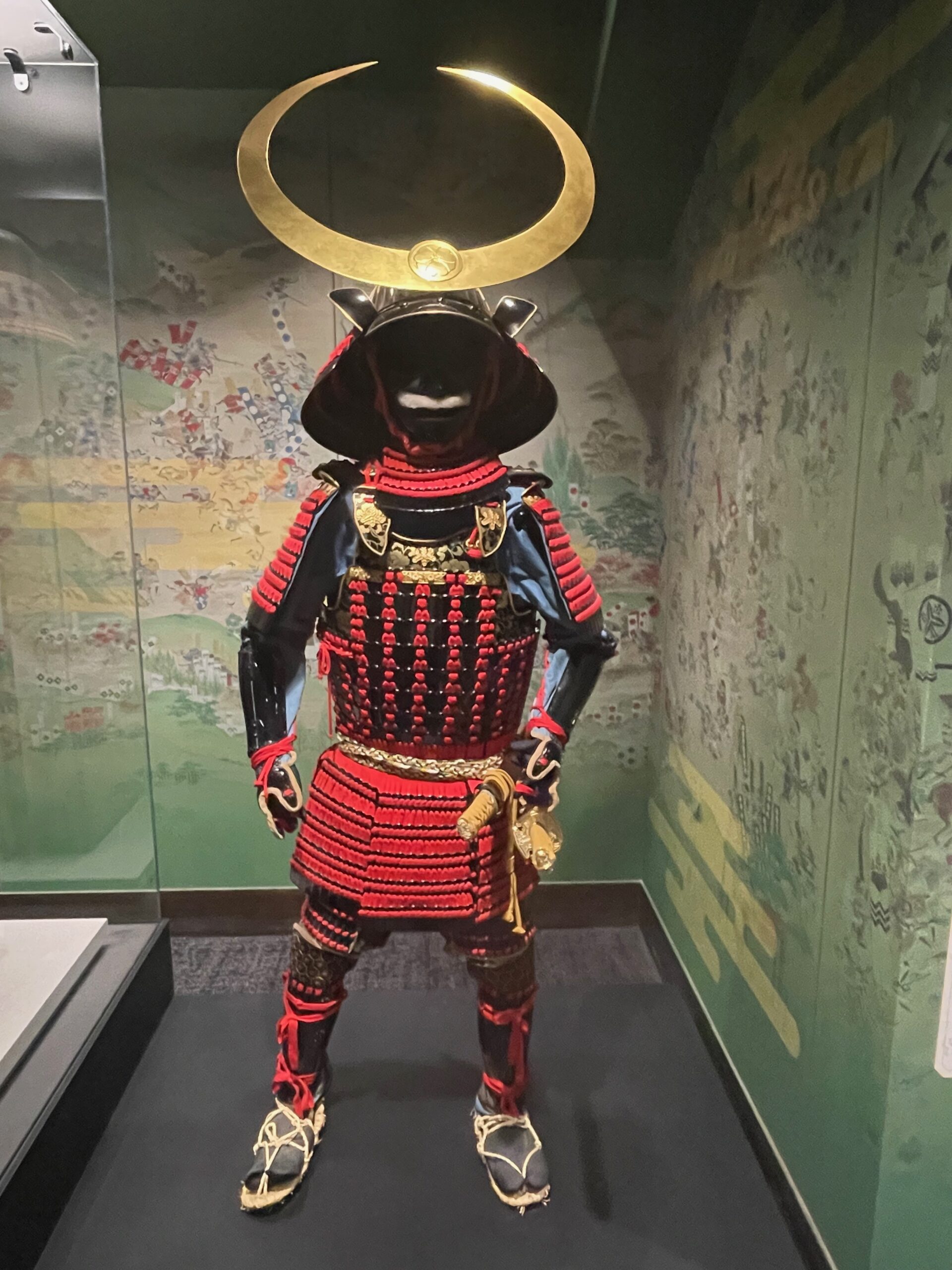 |
In the afternoon we decided to take local train to visit Kurashiki. This is a simple 15 minute ride on a local train.
Kurashiki is known for being well-preserved Edo-era town. The Bikan Historical Area, situated along the Kurashiki River, features rows of well-maintained, white-walled storehouses and merchant buildings that have retained their historical charm. Kurashiki is often referred to as the “Venice of Japan” since like Venice, the town features a network of canals that wind through the city, enhancing its scenic beauty. Note however, that comparison to Venice is more symbolic than literal, the cities have completely different architecture and Kurashiki’s well-preserved historical district is a part of rich heritage of Japan. In the Bikan area you will find many artisanal shops, cafeterias and small restaurants so you can stop there for shopping and some snacks between walking around the charming cobbled streets and crossing the bridges on the canals. In the city you will also find various art, folk and crafts museums, we have visited Inoue House which is a home to influential family in Kurashiki from the early Edo period (17th century). The building is a well-preserved example of the large-scale merchant house. The family still owns the house and makes it open to visitors, inside you can see original interiors of an affluent household from the Edo period. This was an absolute highlight for us!
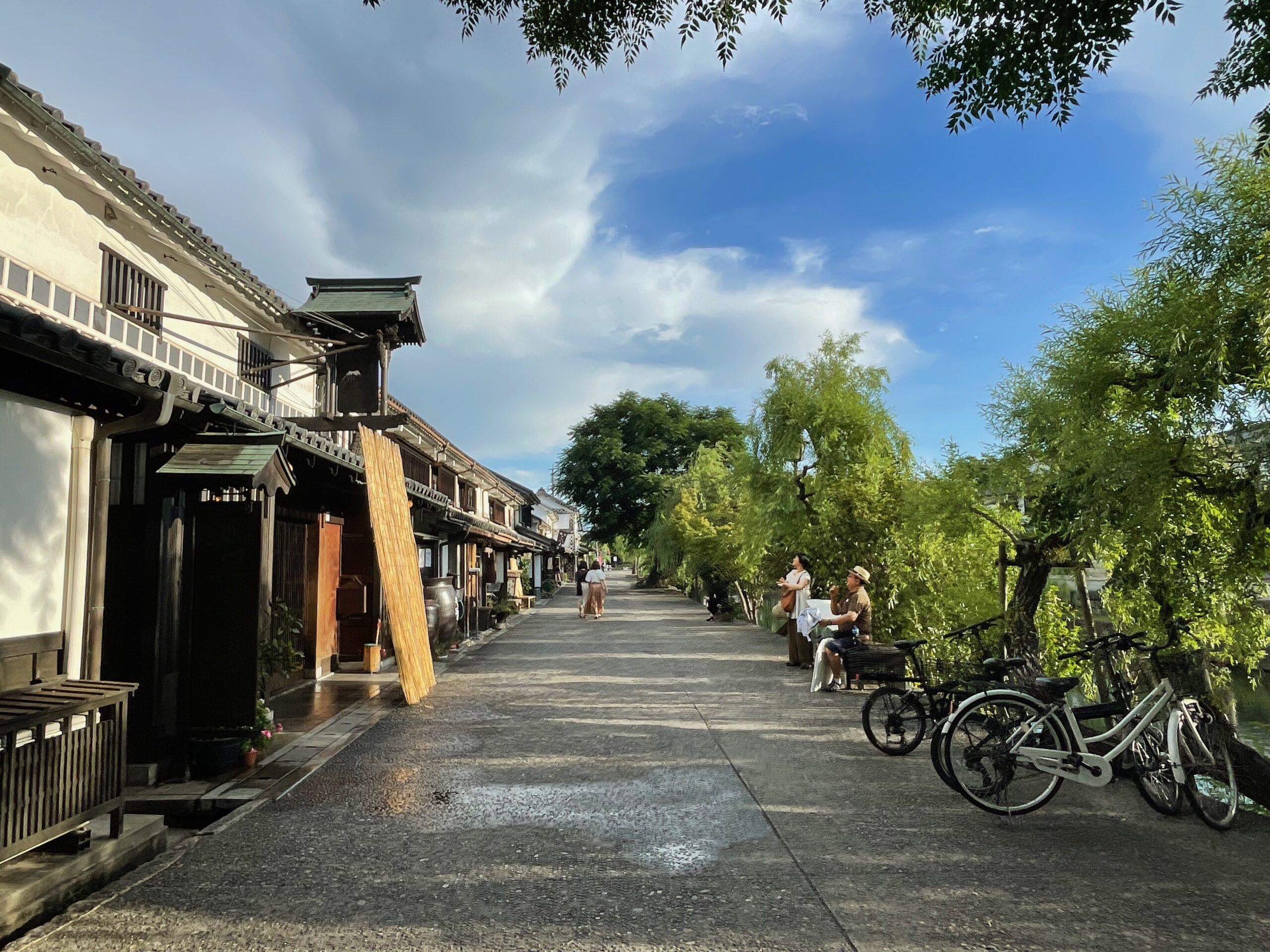 |
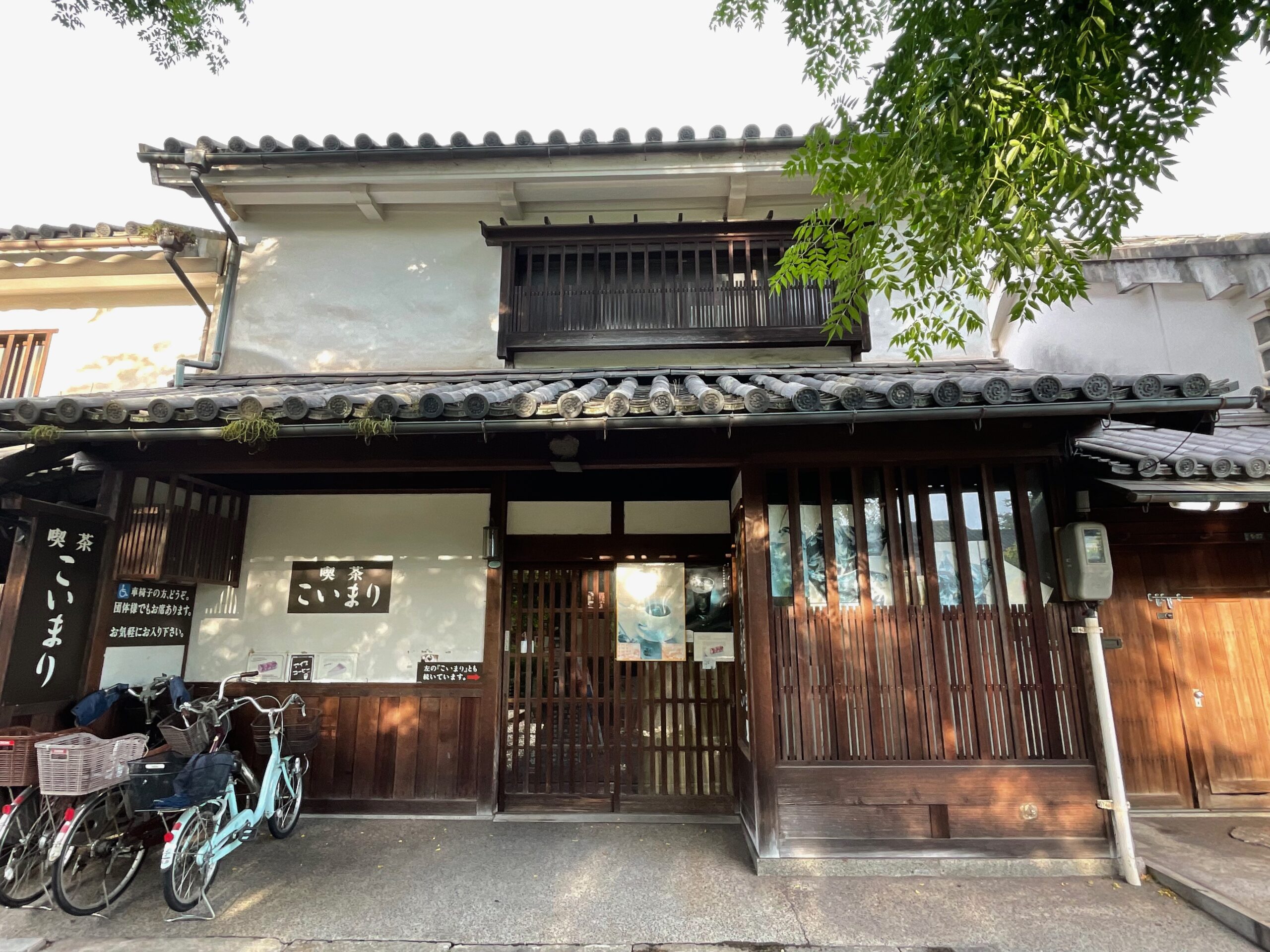 |
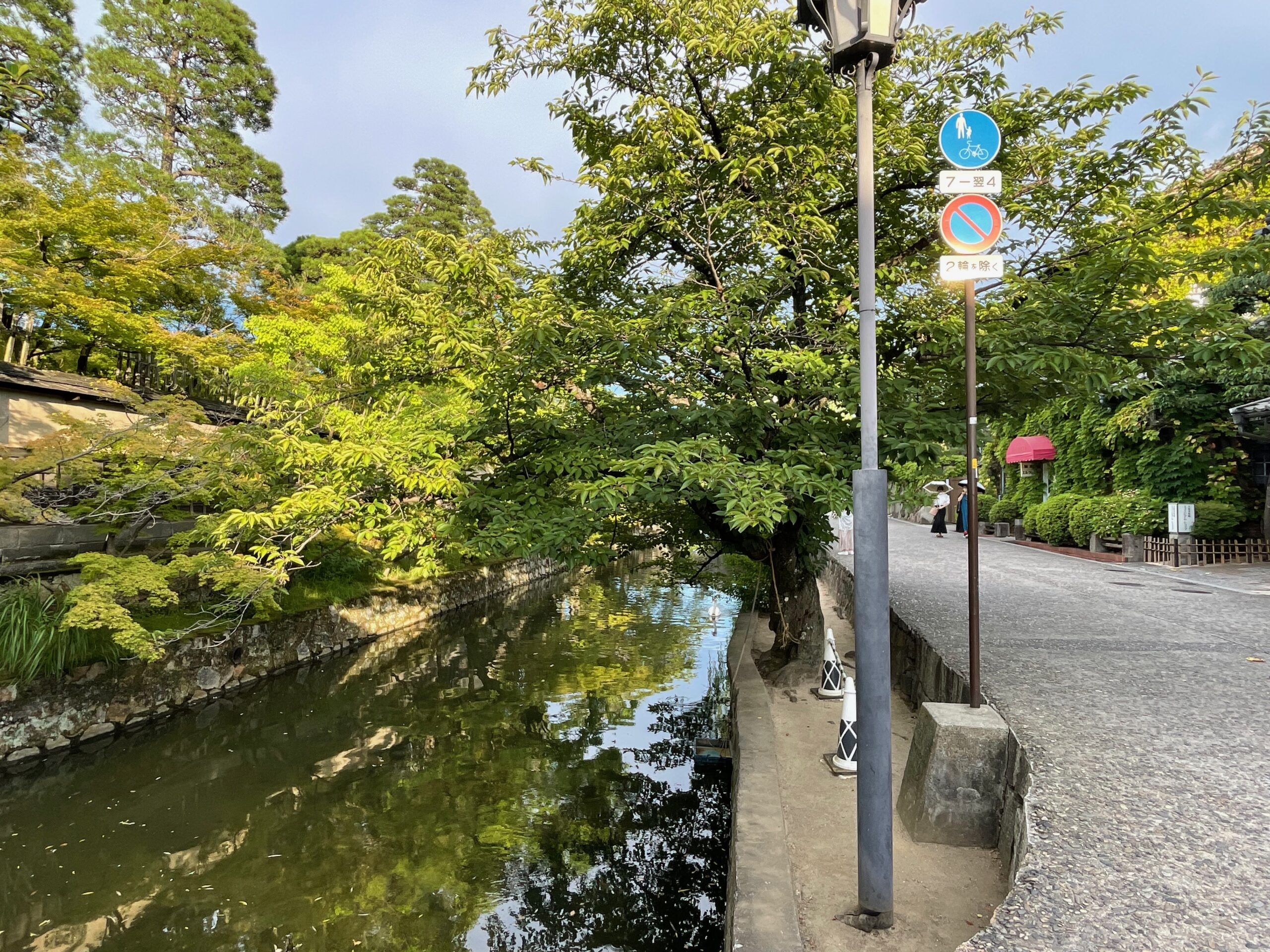 |
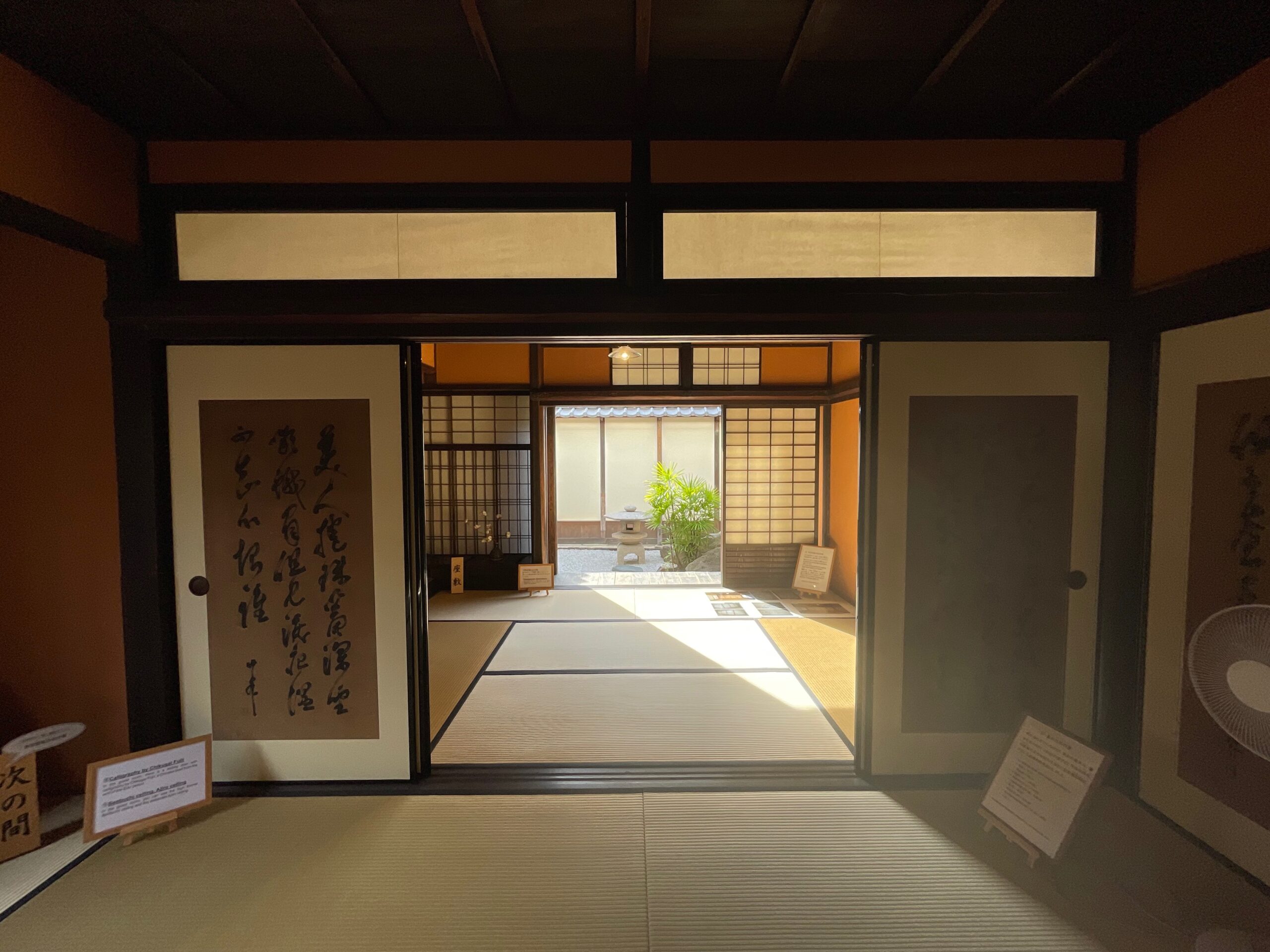 |
Day 7: Fukuoka
Our main motivation to come to Fukuoka (Kyushu) is that we took a ferry to South Korea. There is a direct Shinkansen from Okayama to Hakata (name of the station in Fukuoka), the journey is a comfortable 1h 45 minutes.
Apart from being a great stop if you want to prolong your trip and go to South Korea, Fukuoka is also a good base to discover Kyushu. You can travel from here to famous hot springs in Beppu or go to Nagasaki. If you don’t have time to fly to Okinawa, you can also enjoy great beaches in Kyushu such as Takahama Beach, Karatsu Beach or on Aoshima Island.
Since we had a ferry to Busan next day, we focused on sightseeing in Fukuoka.
Fukuoka offers a mix of historical and modern attractions, from ancient shrines and castles to contemporary art museums and entertainment complexes like Canal City Hakata. Fukuoka is known for its exceptional food, including the famous Hakata-style ramen. The city’s food scene also features fresh seafood, yatai (street food stalls), and a wide variety of local dishes. If you don’t want to travel to have some relaxing time on the beach, Fukuoka has some pleasant beaches along its coastline.
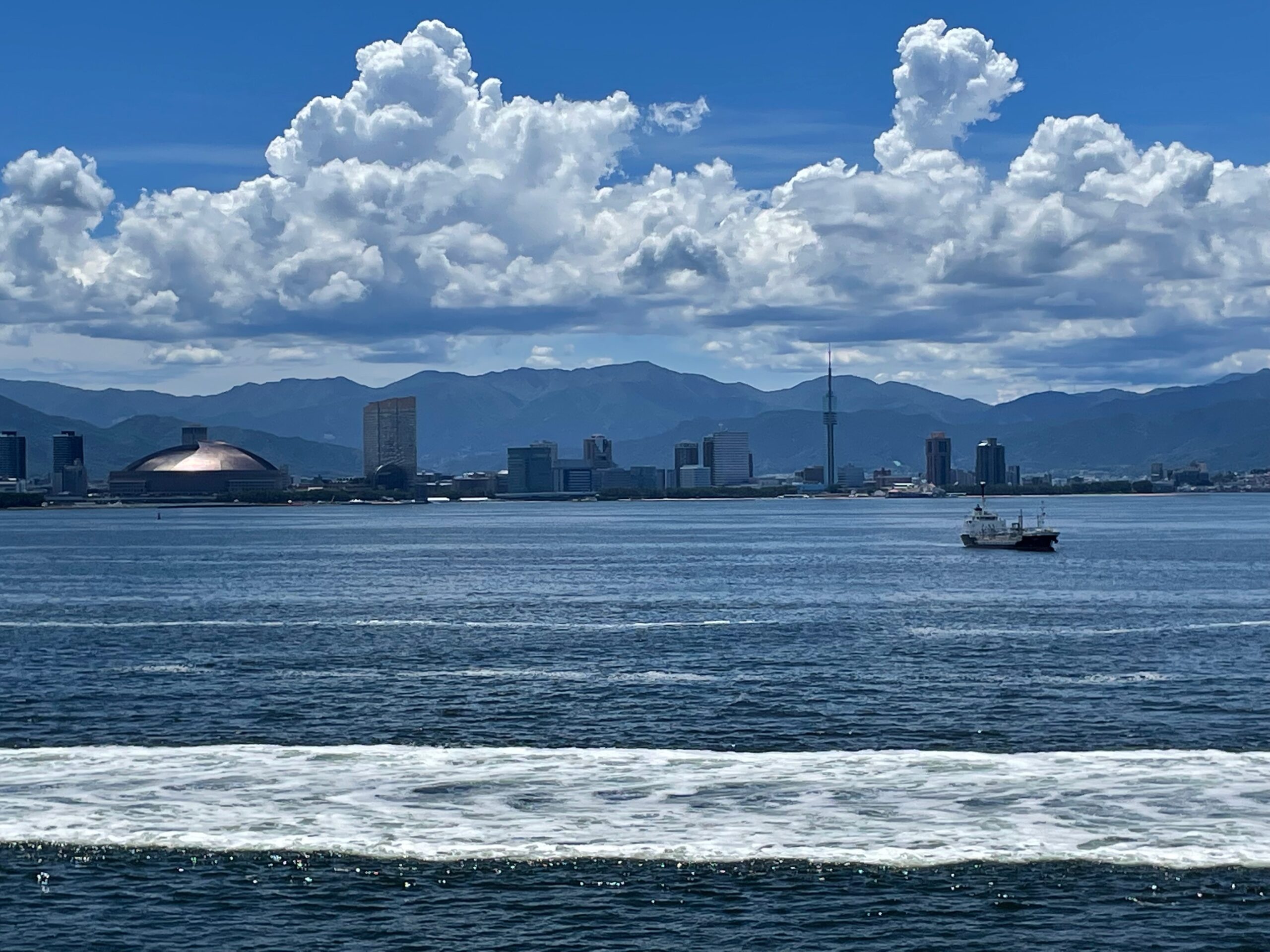 |
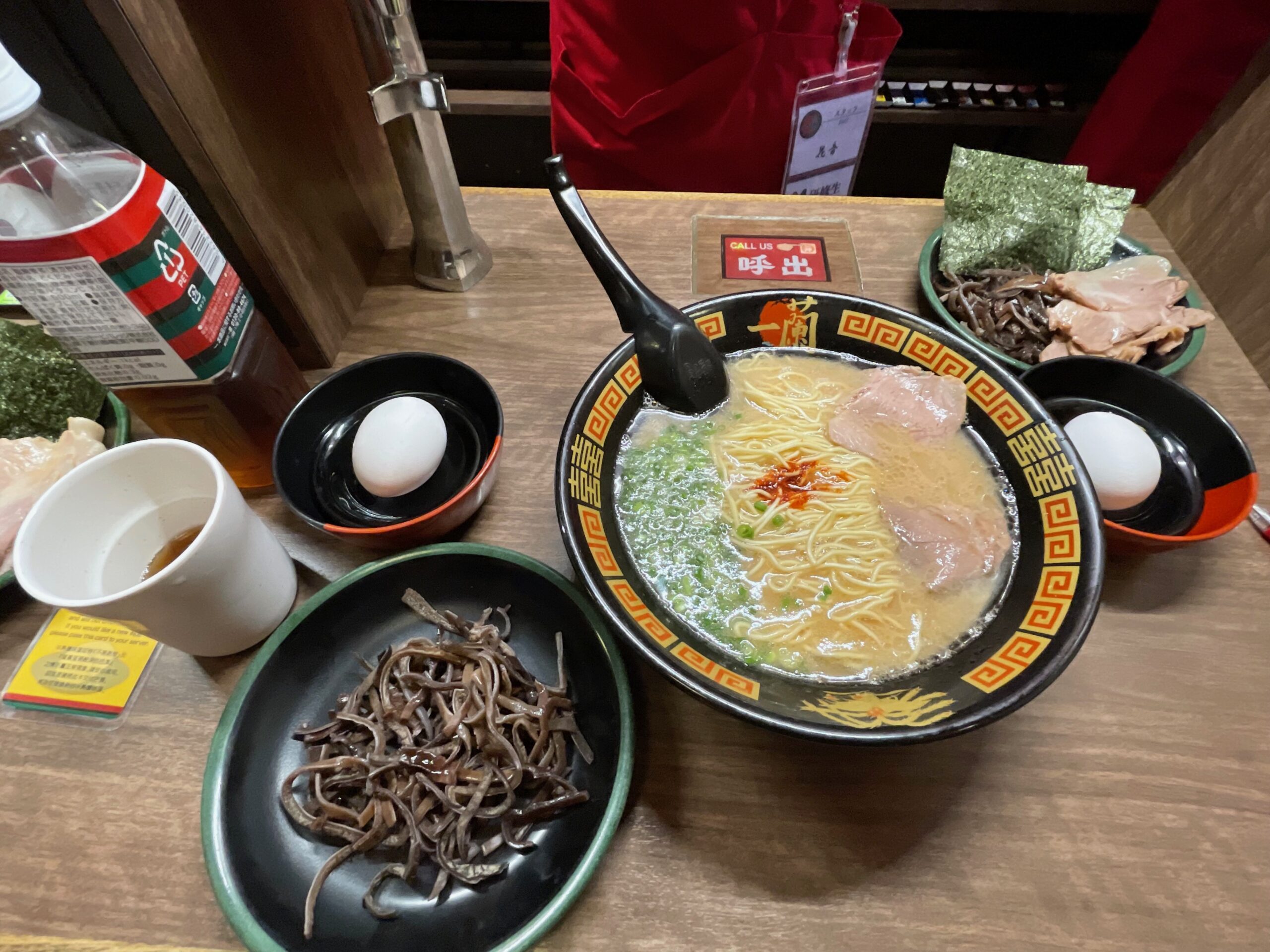 |
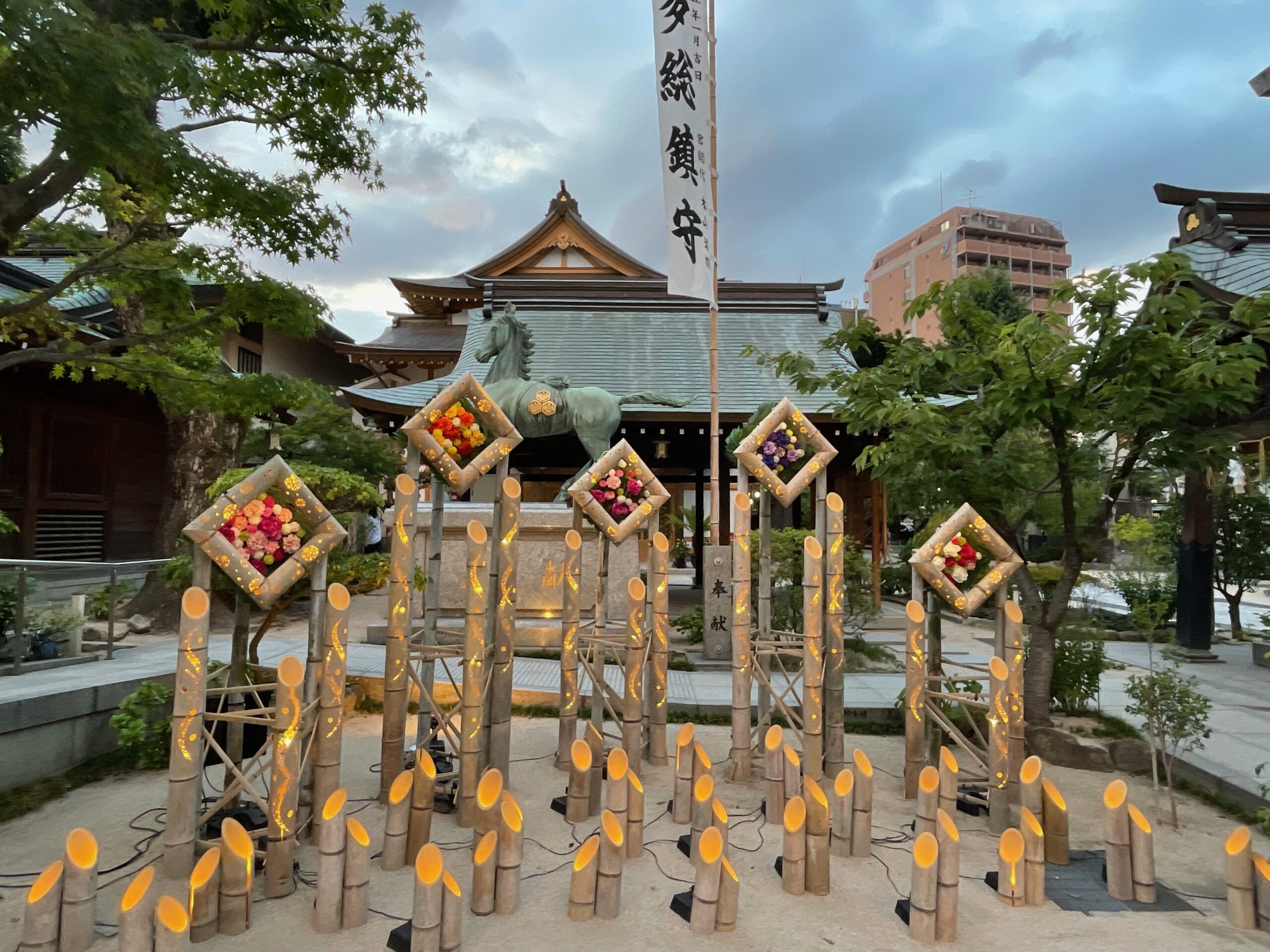 |
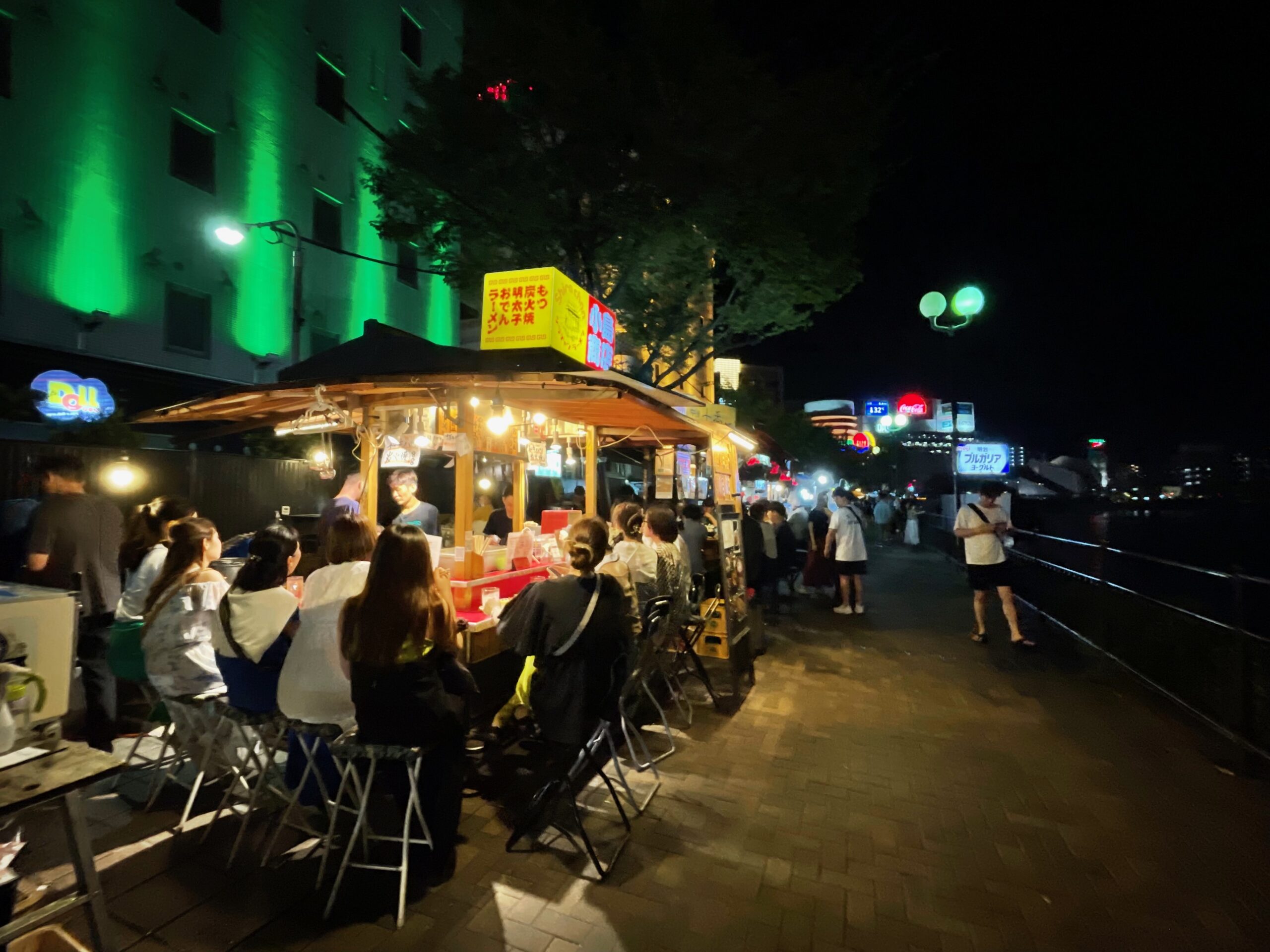 |
The city is not very touristy and it is interesting to walk around and see the relaxed atmosphere and the locals doing their errands. Further from other big cities on Honshu Island, Fukuoka lokked a bit more laid-back and casual.
END OF A JR PASS
THE LAST DAY IN JAPAN (FOR US 12th DAY)
We took a ferry from Fukuoka to Busan in early afternoon. In the morning we had long Japanese breakfast, did last shopping in the area of City Canal and relaxed in onsen in our hotel (providing service only for its guests).
Then we departed to the ferry terminal by bus which stops next to Hakata station. To avoid mistakes, I recommend checking out exact departure point the day before since there is many bus stops around the train station and it’s easy to get confused.
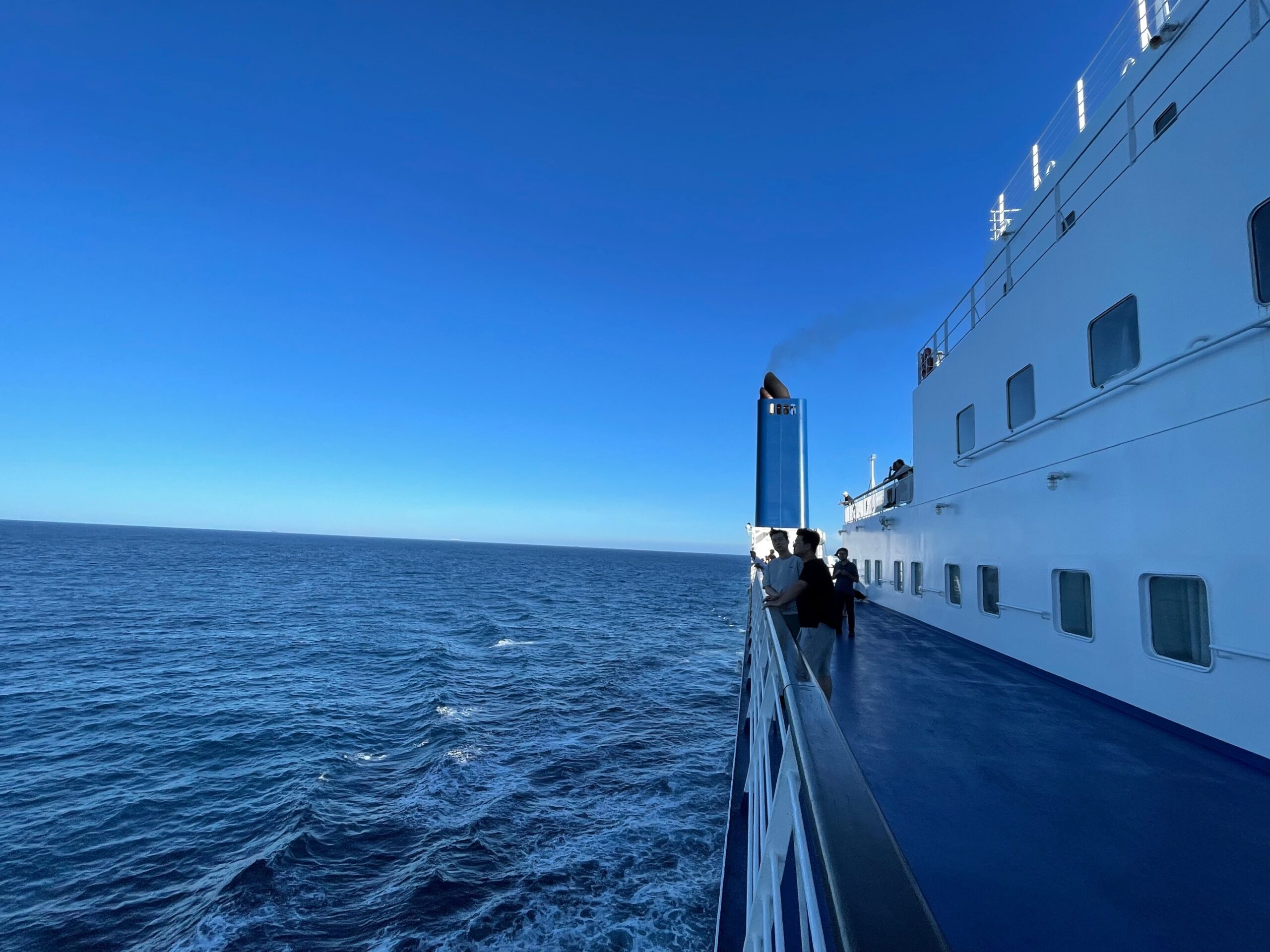 |
The journey by bus takes less than one hour, but the terminal is a bit small so I don’t recommend coming many hours in advance (2 hours prior to departure is fine). The ferry is very comfortable way to travel between those two countries and allows you to avoid a bothersome luggage weight limits when you travel by plane. The travel time differs depending if you choose fast or slow ferry, one should book in advance for good fares. We have decided to travel this way on a slow ferry (Camellia line) and found the trip very relaxing. You can book a whole cabin for you or stay in the shared one, all options had possibility to sleep (even if the journey was during the day). You can have a nap, walk on the open terraces or stay in the common area and have some snacks. Most of the passengers were Koreans and we didn’t see many oversees tourists, however I don’t know how the situation looks like in a faster ferry. The boarding procedures are quite straightforward and we didn’t encounter any issues during the entire journey which I find very enjoyable.
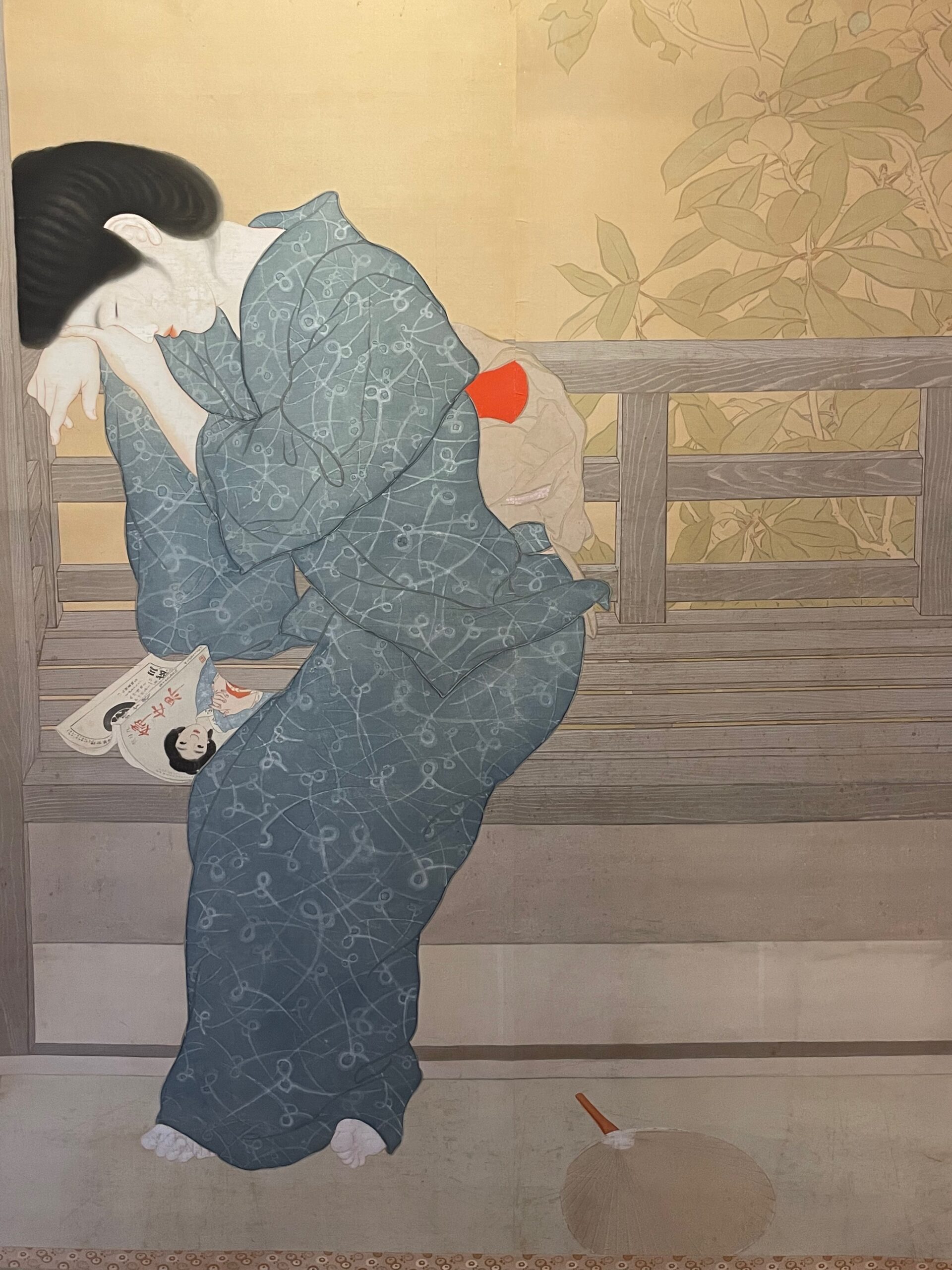 |
